An overview of F1 Powerboat
WHAT IS FORMULA 1 RACING?
Formula 1 Powerboat racing is the most spectacular watersport in the world. It has been described as driving the F1 race car at full speed over a ploughed field. Formula 1 Powerboats accelerate faster than even the most state-of-the-art F1 cars; they are capable of going from standstill to 160 kilometres per hour in only 4 seconds.
Impressive as this is by itself, they compete at these speeds without the use of brakes or gears. It is competitive, fascinating, challenging, daring, risky and entertaining. Formula 1 Powerboat racing is the ultimate extreme sport.
DEFYING THE LAWS OF GRAVITY
Formula 1 Powerboat racing has to be seen to believe. Spectators who are new to this most spectacular watersport are invariably left spellbound when they witness these lightweight catamarans defying the laws of gravity and virtually lifted in the air during high-speed manoeuvre with only a portion of the boat in contact with the water.
It is amazing that these boats can manage to maintain their balance in more than 225kph, taking hairpin turns at 150 kph without brakes and shifting gears, what's more with limited visibility, One tiny error of judgement would spell high-speed disaster.
Driving a powerboat is like piloting a fighter jet. F1 pilots need to have that split-second decision making capability and nerves of steel because once strapped into his fully enclosed safety capsule, he has only his skills, courage and a certain amount of luck to achieve success on the race circuit.
The rivalry between powerboat pilots often thrill the crowds with near-collision overtaking and daring acts as they blazed their boats across the water in high-octane velocity, considerable dexterity and finely tuned driving skills.
THE CHAMPIONSHIP SERIES
Inaugurated in 1981, this international competition is similar to F1 for cars and similar rules apply. Across the world, teams of different nationalities compete in the Grand Prix, which is regulated by the Union Internationale Motonautique (UIM).
THE CHAMPIONSHIP RACES
Races are organised at selected locations around the world based on the water conditions, infrastructures, public access, local hotels amenities and telecommunication facilities. Starting 2009 season, during each F1 World Championship venue there are two Grand Prix races – one race on each day of the venue. Each race lasts for 30 minutes of racing time + 2 laps with up to 24 boats hurtle around the race circuit at thundering speed of 225kph (130mph). All races are broadcast worldwide on TV, on local channels and international networks.
THE CIRCUITS
Every race circuit is different in size, but are generally about 2000 meters in distance. Each circuit has at least one long straightaway and several tight turns, mostly left with one or two right turns. The turns produce a G-force of up to 4.5 on the driver, which means his weight is multiplied 4.5 times as he makes a tight U-turn at over 100 mph (F1 car drivers endure only 2.5).
WATER CONDITIONS
Water conditions play a major part in the outcome of each Grand Prix. With water current and wind conditions varying on every lap and spray being continually showered over the tiny console screen, pilots are quite often driving 'blind' at full speed, mere inches away from their rivals. In the event of a 'barrel-roll' (capsize), a mandatory air bag installed above the pilot's head will inflate upon contact with water. This enables the cockpit to remain above water until rescue arrives. All pilots have a self-contained air supply fitted inside the capsule as an added safety features.
EVENT STARTING POSITIONS
Pole position and starting line-ups are determined by a qualifying session preceding each Grand Prix race. State-of-the-art timing equipment records the performances of each boat to decide the final classification and starting positions.
Each team consists of a manager, one or two pilots, mechanics, radio coordinator, technical coordinator and equipped with infrastructure such as trailer workshop and welcome marquee. They should have one or two catamarans fitted with 2.5 litre engine and compete between 8 to 10 Grand Prix events that make up a full season.
Imagine this: up to 24 lightweight, 16-foot carbon fiber catamaran hurtle around a racing circuit at speeds topping 225kph (130mph); all boats are powered by highly tuned V6 outboard engines, each pumping out 425 horsepower at 10,000 rpm; they boast an awesome power to weight ratio, weighing in at around 500 kilos with a 425hp fully-tuned engine strapped on the transom; they have no brakes or gearboxes. Yes, These are F1 Powerboats.
THE CHAMPIONS
In the last four years there have been four different drivers who have become World Champion. The latest is the American Jay Price who drives for the Qatar Team.
There are a number of new pilots who are making the race more competitive than ever. At each event, about twenty to twenty four pilots represent at least 12 nations, not to mention the countless sponsors, managers, radiomen and women, team members, safety crews and boats, medical staff, doctors, and spectators. The atmosphere is buoyant as tension mounts amongst the competitors, all of whom have worked so hard to be worthy of competing in the F1 Powerboat World Championships.
Nominees Profile
- Articles and Guides

Formula 1 Powerboat Racing - the Ultimate Adrenaline Rush
5th oct 2017 by rightboat team.

In June 2018, the city of London will be blasted by the bellowing shrill of up to twenty racing V6 engines revving at over 10,000rpm. These highly tuned speedsters will then hit 62 mph in less than two seconds before maxing out at 155mph. What follows will be 45 minutes of the most exhilarating and spectacular racing that the city has ever witnessed. Twenty speed jocks, each peering intensely through a tiny windscreen, white-knuckled hands firmly grasping a steering wheel, will unleash 10,000hp of sheer power upon the city. This is Formula 1…but with a big difference. You won’t find Lewis Hamilton Instagramming from the grid, or see Fernando Alonso reclined in his now customary deck chair. They’ll be no talk of tyre compounds or fuel saving. This is F1H20, better known to the punters as Formula 1 Powerboat racing.
Now in its 4th decade, F1 powerboats will return to London for the first time since 1984, taking place during London Tech Week 2018, Europe’s largest festival of technology and innovation. The race will be part of the 38th F1H20 World Championship season. 8 races held across the globe from Abu Dhabi to China to Miami. The event will showcase the cutting edge of powerboat technology and engineering and will be broadcast live on Sky Sports. Welcome to the Formula 1 Powerboat racing- the ultimate adrenaline rush!

Where it all began
Formula 1 Powerboats didn’t have an easy birth. The genesis of the series is a story of change and evolution with multiple promoters and two massive corporations battling to win the right to call themselves Formula 1. The fight would lead to disarray and bitter wrangling amongst competitors and would finally end up in an acrimonious divorce.
The story begins in 1978, when PR manager, David Parkinson was approached by one of his clients, Mercury Marine, who offered to support him if he could establish a single unified championship for inshore powerboats. The resulting race, sponsored by another of Parkinson’s clients, became known as the Canon Trophy. At the same time the concept was launched, there had been an on-going engine war between Mercury Marine and their arch-rivals OMC (Outboard Marine Corporation). OMC favoured 3.5litre V8 that would become known as the OZ class,whilst Mercury offered a standard 2litre power-plant. This was known as the ON class. OZ manufacturers offered drivers a free supply of their engines in a bid to succeed. OZ powered boats with their vastly greater power, easily swept the ON powered craft before them.
Finally, at the Italian Grand Prix, the détente broke when Renato Molinari arrived to compete with two engines in the back of his boat. 28 drivers signed a petition demanding that OZ powered boats be banned giving birth to the Formula ON Drivers Association (FONDA). In 1981, OZ boats and ON boats would have their own championships. OMC would run the OZ class whilst FONDA would run the ON class. However, both championships felt it was their right to be prestigiously titled, Formula 1. In 1981, cigarette manufacturer John Player, chose to sponsor the OZ championship. The sponsorship money resulted in enormous technological and performance advantages over the lower-powered ON boats which were being run effectively as the remains of the Canon Trophy.
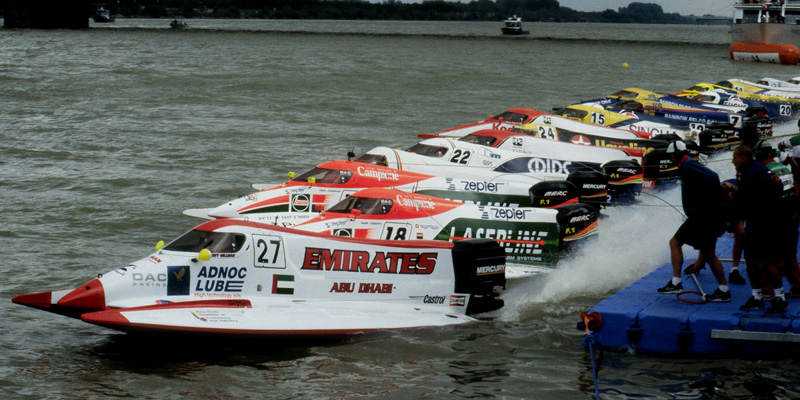
The Monaco based international governing body of powerboat racing, Union Internationale Motonautique (UIM), finally stepped in awarding Formula 1 status to the OZ class while the ON class was overshadowed and had to settle for the less prestigious “World Grand Prix” nom de guerre. In common with Formula 1 car racing, Formula 1 Powerboat racing adopted a points system with the top 6 finishers receiving 9, 6, 4, 3, 2, 1 points. With the money pouring in from John Payer, the speeds increased to dangerous levels. This reached a tragic climax in 1984, when Tom Percival was killed in a racing accident.
He was the fourth driver to lose his life in just a few short months. Major sponsor, Carlsberg cancelled their contract for fear of the brand being closely associated with the death or serious injury of another driver. A depleted field finished the 1984 season but it was obvious that the OZ class couldn’t hold on to the Formula 1 moniker much longer in its current state. The series eventually ended in 1986.
There was now the opportunity for the FONDA World Grand Prix Series to take up the mantle of Formula 1. After three years without an official Formula 1 Championship, UIM awarded FONDA Formula 1 status in 1990. Today the boats are powered by Mercury 2.5litre engines which were introduced in 2000, replacing the original 2litre power-plants.
The Powerboats
The early boats were made from plywood with drivers dangerously exposed in an open cockpit with a high risk of serious injury or death. To improve the safety in the new Formula 1 series, boat designer Chris Hodges was brought in. His first contribution to the sport was that of a safety cell made from strong composite material. Hodges’ safety cell was separate from the main structure and was fitted to the hulls and centre section. In a similar manner to the cockpit area of an F1 car, the safety cell was designed to absorb the forces of an impact leaving the wooden hull to break up, whilst the driver remained protected in the cell.
This heralded a revolution in powerboat safety with equipment such as airbags becoming mandatory. It was only now that drivers wore seatbelts. Nowadays composite material has replaced wooden hulls.
Modern Formula 1 Powerboats are tunnel hull catamarans. This design lends to exceptional manoeuvrability and speed. The tunnel hull design creates “lift” in the same way an aeroplane’s wing functions, hence, when they are at high speed only a few inches of the boat actually touches the water. They weigh 860 pounds (390 kilogrammes) of which 260 pounds (118 kilogrammes) is the engine. They are seven feet wide (2 metres) and 20 feet long (6 metres). Weight is kept to a minimum by the use of carbon fibre and Kevlar in the construction process.
A Mercury Marine V6 two stroke engine powers the boat generating over 400hp at 10,500rpm resulting in 0-100kph (62mph) in less than two seconds and a top speed of over 250kpm (155mph). The engines burn through 100LL Avgas at a wallet-shattering rate of 120 litres or 32 gallons, per hour.
The Drivers and Teams
Since 1981, there have been thirty-three Formula 1 Powerboat World Champions, but of these, one man stands head and shoulders above the rest, Guido Cappellini. The most successful powerboat racer in history and the sports equivalent to F1 god, Michael Schumacher, this Italian racer has won ten world titles in the sport. Winning his first title in 1993 and he went on to win the next three years back to back. He retired in 2009 after winning his tenth title and final that year. He’s currently team manager for Team Abu Dhabi Formula 1 powerboat team.
The current champion is a three-times winner, 53-year-old Frenchman, Philippe Chiappe. He’s won all three of his titles driving for the CTIC Shenzhen China Team who he’s driven for since 2010. He began his career in 1998, competing in the French S850 class before moving on to the S3000 class in 2001. He made his debut in Formula 1 in 2003 before returning to win the S3000 class in 2006. His first F1H20 podium was in St. Petersburg in 2009 and first pole position in Abu Dhabi in 2014. By 2015, Chiappe had started 100 Formula 1 Powerboat races. He is one of only four drivers to have won back-to-back championships.
For the 2017 season nine teams of two drivers are competing for the title. The teams and drivers are as follows:
CTIC F1 Shenzhen China
Based in France and managed by Eric Chan. Debuted in 1997.
Drivers: Philippe Chiappe
- Peter Morin
Victory Team
Based in United Arab Emirates and managed by Scott Gillman. Debuted in 2015.
Drivers: Ahmed Al Hameli
- Shaun Torrente
Team Abu Dhabi
Based in United Arab Emirates and managed by Guido Cappellini. Debuted in 1997.
Drivers: Thani Al Qemzi
- Alex Carella
- Rashed Al Qemzi
F1 Atlantic Team
Based in Portugal and manged by Mario Benavente. Debuted in 1999.
Drivers: Grant Trask
- Duarte Benavente
Mad-Croc Baba Racing
Based in Italy and managed by Michael Jenkins. Debuted in 2000.
Drivers: Sami Selio
Team Sweden
Based in Sweden and managed by Jane Persson. Debuted in 2006.
Drivers: Jonas Andersson
- Erik Stark
Blaze Performance
Based in Italy and managed by Francesco Cantando. Debuted in 1996.
Drivers: Bartek Marszalek
- Francesco Cantando
Emirates Racing Team
Based in United Arab Emirates and managed by Craig Bailey. Debuted in 2015.
Drivers: Marit Stromoy
- Mike Szymura
Maverick F1
Based in France and managed by Jean Vital Deguisne. Debuted in 2015.
Drivers: Beranger Robart
- Cedric Deguisne
- Amaury Jousseaume
Each team usually consists of a manager, two drivers, mechanics, radio coordinator and technical coordinator. Each team operates two boats (plus 1 F4 boat) and associated infrastructure such as workshop trailers, etc.
Up to ten teams, 20 drivers, engineers and other support staff compete for the Formula 1 Powerboat World Championship. The Grand Prix season 2017, comprises of six races beginning in April in Portugal followed by France, two in China and Abu Dhabi before climaxing in December in Sharjah, U.A.E. The Grand Prix is held over three days.
Day 1 mostly consists of technical scrutineering and registration. The teams must ensure that their craft and associated equipment are in the pits 24 hours before this process begins.
Day 2 begins with a drivers’ briefing and is followed by free practice. Qualifying takes place in the afternoon. The race circuit is approximately 2,000 metres with multiple turns. They are usually located on lakes, rivers, protected bays or inland waterways. The turns can produce a G-force of up to 4.5 in a U-turn at 100mph. Pole position is decided by a three-tier qualifying system in a similar fashion to the one employed in Formula 1 car racing. Q1 is a twenty-minute session with all boats running multiple laps. The fastest 12 progresses to Q2. After a short break, Q2 begins, running for another twenty-minutes. The six fastest boats in Q2 then progresses to the final session, Q3. The top six boats run in reverse order from their fastest Q2 times. They run two laps each to decide their starting positions.
Day 3 is race day and it begins with a drivers’ briefing and then an hour of free practice. The race itself is held in the afternoon with a duration not exceeding 60 minutes. The average race is usually around 45 minutes long, longer than any other powerboat race but substantially shorter than most car races. The Grand Prix weekend ends with the trophy ceremony at 4:00pm.
World Championship points are awarded as follows;
1st - 20 points
2nd - 15 points
3rd - 12 points
4th - 9 points
5th - 7 points
6th - 5 points
7th - 4 points
8th - 3 points
9th - 2 points
10th - 1 point
In addition to the F1H2O race, a support class race made up of F-4 class craft is held. This consists of two single races per weekend. The boats are equipped with Mercury 60hp stock EPA engines and reach a top speed over 120mph. In common with their more powerful big brother, F4s utilise a tunnel hull catamaran design. Many F4 drivers use the class to obtain the super-licence needed to progress to more powerful series such as F2 and F1H20. At a F1H20 Grand Prix weekend, each team must run one F4 boat in the support races.
Osprey Rescue provide safety support at the events. They worked alongside Chris Hodges in the design of the safety cell, testing the device. Their safety boat incorporates a crane which can support the safety cell out of the water keeping rescue times down to a minimum.

With water and wind conditions playing a major part in a race’s outcome, drivers frequently drive “blind” at full tilt in close combat with their competitors. The trick is to “trim” the boat to attempt to control the amount of water flowing through the hull’s tunnels, to increase or decrease the amount of drag. This is achieved by subtly altering the angle of the engine. Teams have up to 40 different propellers of varying “pitch” (angle of the blades) to choose from, depending on conditions. Former world champion and boat designer, American Billy Seebold told the Independent newspaper;
"A Formula One boat is more an aeroplane than it is a boat. The driver is trying to fly it just above the water, working the throttle with the foot, steering it and monitoring a two-litre engine all at the same time."
Get the trim wrong and a driver could be facing being catapulted sky-high. Welsh-born former race winner Jonathan Jones describes the process to E&T.org thus;
"There is a fine line between getting it right and running on a cushion of air and totally losing control. You don't want a lot of contact with the water because it creates drag, but at the same time you need some contact otherwise you lose control of the boat. You are trimming the boat by moving the engine in and out and up and down as you try to get the boat to glide millimetres off the top of the water. Sometimes if you alter the angle by even one or two degrees it is the difference between running the boat perfectly without any drag and getting too much air under the hull causing the boat to blow over.”[1]
The boat is controlled by buttons on the steering wheel which control hydraulic rams that move the engine at the rear of the boat in and out and up and down. The higher the engine is raised more air is trapped inside the hull tunnels the faster the acceleration. The trick is to maintain a balance between keeping enough contact with the water to remain in control whilst minimising the contact to decrease drag. Small increments as little as one or two degrees can have a devastating effect on the handling of the powerboat. Jones went on to describe the technique employed;
"You come out of a corner, you trim the engine out by about 15 degrees, it lifts the nose and you capture the air in the tunnel, accelerate off the corner and try to control the boat to keep as much air in the tunnel. After about 250m you start bringing the nose down by trimming the engine in, which lowers the nose and the boat levels out as you reach top speed. You approach the corner, which is a single turn buoy about half a metre wide and you are only half a metre away, at about 125mph, take the turn and exit at about 100mph. I've measured the lateral G-force at 6.5Gs, but it happens very quickly."
Shortly after winning his third Formula 1 car racing title in 1984, Niki Lauda test drove a Formula 1 powerboat. “It’s like driving a Formula 1 car across a ploughed field”he said. That sums up F1H20 perfectly. It’s exciting, it’s dangerous, it’s exhilarating and it’s ever so slightly bonkers! It’s cutting-edge technology meshed with visceral skills and cool-headedness. Put simply it’s a 400hp two-stroke engine propelling a 390kg catamaran at speeds of over 150mph on a cushion of air and held to the water by mere millimetres of adhesion which could prove the difference between the glory of winning and catastrophic disaster. What’s not to like? Read F1 powerboat - Engineering and Technology
Written By: Rightboat Team
The Rightboat team

More from: Rightboat Team
Related Articles and Guides
16th Apr 2024
17 Top Boat Shows to Visit in the Year Ahead
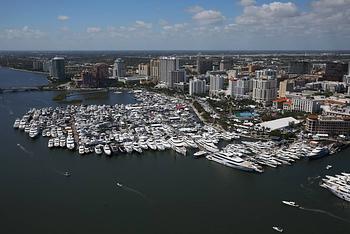
28th Feb 2024
Palm Beach International Boat Show
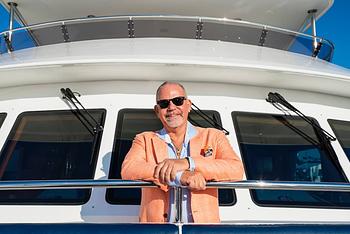
23rd Feb 2024
Rightboat Interview: Talking Long Range Cruising Yachts with Jeff Druek
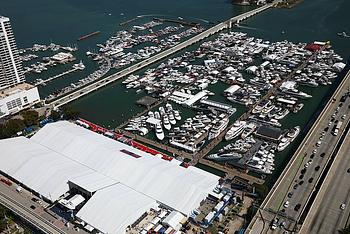
8th Feb 2024
Miami International Boat Show, Six Shows In One
- Explore Rightboat
- Boats for Sale
- Boating Articles
- Buyers Guide
- About RightBoat
- Sell Your Boat
- Boat Selling Advice
Enter your email to keep up to date with the latest news
Join for free
Sign up now for free and discover how easy it is to keep up to date with THE latest boats for sale. Find your right boat, and tailor your voyage to finding your next boat.
Benefits of becoming a member:
- Set up tailored alerts
- Personalise your experience
- Download full specifications and broker details
- Keep tabs on your favourite boats
Are you a broker? Join as a Broker
Rightboat - join for free.
Do you have an account already? Login
Save this search
Save your search and receive new boats in your email..
You can unsubscribe from your alerts whenever you like. By pressing the button you accept the Legal Terms and conditions

- How to Get SPEED SPORT 1
- About SPEED SPORT 1
- Frequently Asked Questions
- Management Team
- Contact SPEED SPORT 1

Formula 1 Powerboat World Championship
- MORE AMERICAN RACING
Formula One Powerboat Championship is a high-speed, international boat racing series that features some of the fastest and most technologically advanced powerboats in the world.
The boats used in the championship are known as Formula 1 Powerboats and are single-seat vessels powered by high-performance outboard engines designed to travel at speeds of up to 140 miles per hour.
Formula One Powerboat Championship events are held around the world, including in Europe, the Middle East, and Asia. The championship is known for its high-speed action, as boats jostle for position on the water, making daring turns and maneuvers at breakneck speeds. The events draw large crowds of fans who come to witness the spectacle of these high-speed powerboats in action.
Watch Formula 1 Powerboat World Championship FREE on SPEED SPORT 1.
America’s leading motorsports brand, and leading producer of motorsports programming and live streaming broadcasts from around the world.
- Live Preview
Connect with SS1
© Copyright 2023 Turn 3 Media, LLC and FAST Partners LLC. All Rights Reserved
Privacy Policy | Terms of Service

THE ANATOMY OF AN F1H2O POWER BOAT -->

F1 H2O boats don’t really look much like boats – in fact, they’re more like an aeroplane with short wings. This is partly because they try to minimise the time they spend in the water. In order to go as fast as possible, they actually prefer to hover just above the surface. To find out more about these amazing machines, let’s take a closer look to Team China’s CTiC machine.
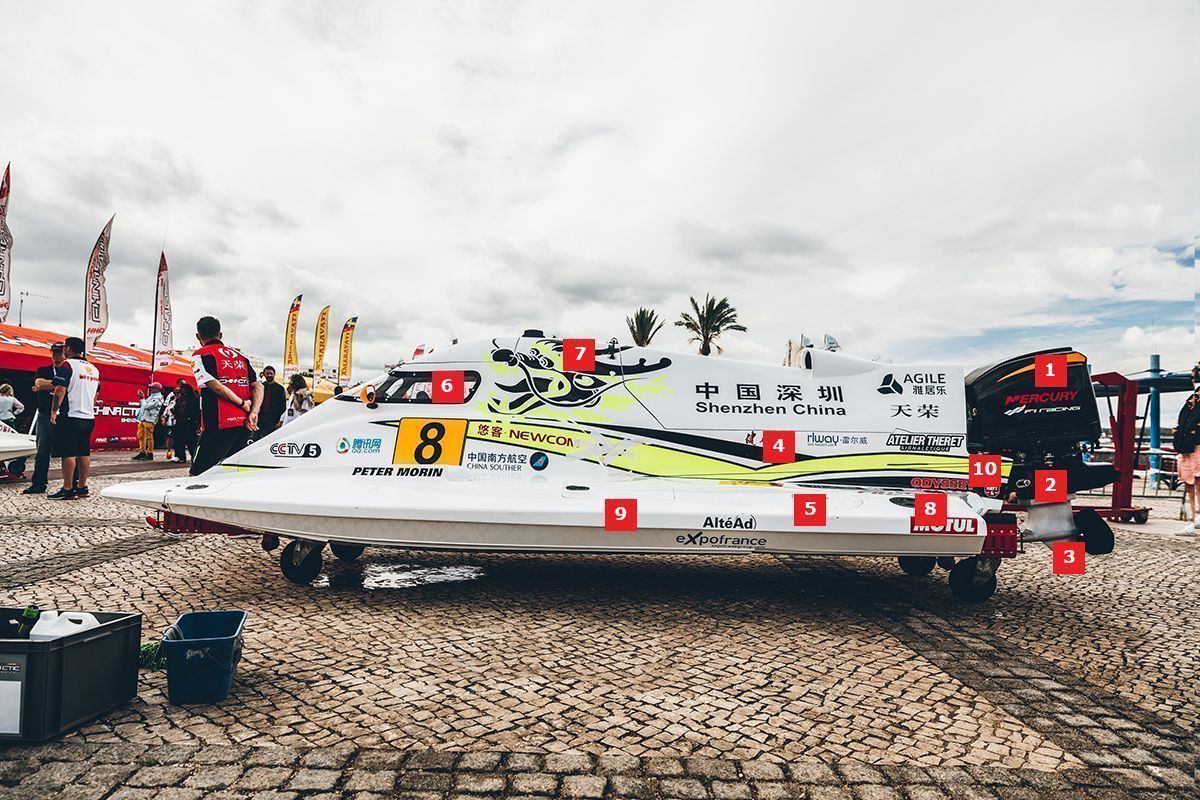
1: Engine: A Mercury V6 two-stroke engine(!) producing 450bhp and going up all the way to 9000 rpm. The whole engine until can swivel up and down, which is called trimming.
2: Transfer case: A gearing system that transfers the engine output to the propeller.
3: The propeller. The propeller is one of the key parts of the boat. Like the tyres on a racing car, it provides traction and propulsion. Various propellers of different sizes, weights and shapes are used in F1H2O. The propeller is chosen based on the conditions and fuel load.
4: Fuel tank: Takes 120 litres of fuel, which is just enough for a 45-minute race.
5: Hull: Every boat as a special carbon fibre hull, made entirely from carbon fibre.
6: Cockpit: Driver’s position. The driver sits in a carbon monocoque style cage which provides impact protection. The driver can ‘trim’ using paddles on the steering wheel and accelerate using a throttle pedal.
7: Airbag and ballast tank: (8) In the event of a crash in which the boat risks ending up face-down in the water, an airbag is deployed forcing the boat back up. A seal opens at the bottom so that the rear end of the boat fills up with water, stabilising it.
9: Oxygen tank: In a worst-case scenario, in which the driver and cabin end up under water, each boat has its own oxygen supply with a mouth piece in the cabin so the driver can breathe while submerged.
10: Steering system: Very precise steering by means of a wire system, controlled by an electrically powered steering system.

- Subscribe Now
- Digital Editions

New engines for Formula 1 H20 powerboats
Four-stroke unit out to challenge domination of the two-stroke Mercury
A new engine is to be tested at the opening round of the UIM Formula One Powerboat World Championship in Qatar on March 10 which could revolutionise inland circuit racing and provide a direct challenge to Mercury Marine .
Developed by the South African Caudwell Racing team, the engine is a 4-stroke, 3.5lt overhead camshaft unit using performance components developed by Cosworth Racing .
It is claimed to be able to run as high as 8,500 rpm in race trim. Caudwell are hoping the engine provides a real challenge to the currently used Mercury Racing 2-stroke, 450 horsepower EFI engines.
It is not the first time that inshore circuit racing has eyed Cosworth in its attempt to challenge Mercury.
Recommended videos for you
In the mid-1970s, Jackie Wilson and Bill Brown (an early member of the Cosworth motor racing team) cleverly got round the strict outboard ruling by installing their 6-cylinder Cosworth units on detachable frames.
Although competive, they weren’t a match for the power-to-weight ratio of the 2-stroke outboard.
But a move away from 2-stroke is now imperative. While the current 2-stroke lubrication systems are claimed to be pollution-free, some areas in Europe have imposed strict conservation rules against them.
The Union Internationale Motonautique has been keen for some time to switch to 4-stroke power and this new engine could provide the answer.
“We are entering the Formula 1 series in a very respectful and professional way,” said Kevin Delaney, team manager of the 4-stroke project.
“We realize we have a lot to learn but we expect to compete immediately and get better as the season goes along.
“Durability and improved environmental performance are our focus as we introduce this 4-stroke technology to the sport.”
Subscribe to the print version of MBY ; subscribe to the digital version of MBY
Mayla GT tour: ‘100+ knot’ speed machine with outrageous looks
Sirena 48 hybrid coupé: world’s first production motor yacht with hybrid drivetrain, swift trawler 54 first look: plugging a gap in the beneteau range, latest videos, arksen 85 explorer tour: the ultimate long-range cruiser, sacs rebel 50 tour: the world’s most luxurious rib, fairline targa tour: sensational new british sportscruiser, navan s30 & c30 tour: exceptional new axopar rival.

Explained: What are F1’s current power unit engine rules?
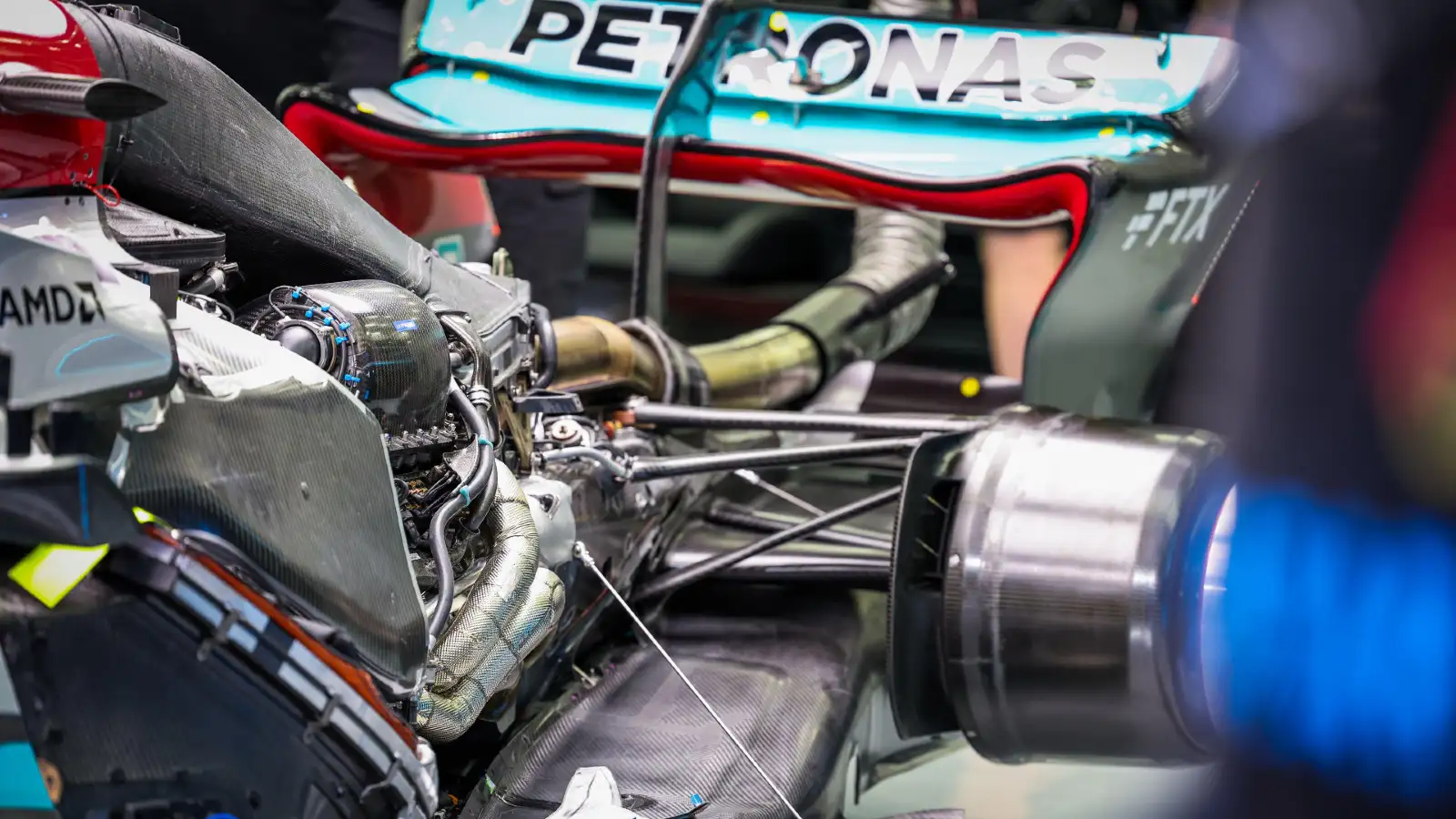
Mercedes' F1 engine on display.
F1’s hybrid power units are the most technologically advanced engines in the world, boasting astonishing levels of efficiency and power output.
Formula 1’s current engine regulations dictate that each team must be powered by a four-stroke 1.6 litre V6 engine, which includes a turbocharger and hybrid electric ancillaries, and sees a maximum permitted RPM of 15,000.
The technical details of these engines are highly prescribed, as laid out in the current Technical Regulations .
The current engine formula was introduced for the 2014 season, with the rate of progress since then seeing the manufacturers achieve incredible efficiency and remarkable power output.
The current rules will remain in place until, at least, the 2025 season, with talks currently underway to decide upon the next generation rules set to be rolled out for 2026.
Who makes the current F1 engines?
There are currently four manufacturers of homologated power units for use in Formula 1.
- Mercedes : Based in Brixworth and manufactured by Mercedes High-Performance Powertrains, these engines are used by the Mercedes factory team, and customer teams McLaren, Williams, and Aston Martin.
- Ferrari : Manufactured from Ferrari’s base in Maranello, the factory team are just one of three teams using these engines. Joining them are customers Alfa Romeo, and Haas.
- Honda: While officially withdrawn from Formula 1 as a factory effort, the Japanese manufacturer’s engines are still manufactured from their base in Sakura, and shipped to Red Bull and AlphaTauri for use in the 2022 season. Red Bull’s new engine department, branded as Red Bull Powertrains, will eventually take over the manufacturing of their own engines.
- Renault : Based in Viry-Chatillon, the current Renault power unit is only used by the factory Alpine (owned by Groupe Renault) outfit.
How powerful are F1’s 2022 engines?
F1’s 2022 engines produce over 1000bhp, with all of the manufacturers achieving similar figures. Exact figures are not offered by the manufacturers, meaning that calculating the most powerful is down to educated guesswork, rather than any measurable public metric.
Despite this incredible output, the power units only use around 130 litres of fuel for a Grand Prix distance of 300 kilometres.
The power output means that F1 cars accelerate from 0-100 kilometres per hour in around 2.6 seconds and achieve speeds of around 380 km/h in the lowest downforce configurations the teams will use during the season – the top speed could be far higher if the downforce is reduced further, although this would be dangerous for use outside of very exact circumstances.
F1’s incredible hybrid engines
With the old normally aspirated V8 engines discarded at the conclusion of the 2013 season, the hybrid era resulted in a whole new approach to how F1 cars are powered.
No longer merely an ‘ICE’ (Internal Combustion Engine), F1’s ‘power units’ are comprised of various components that have the ICE at their heart.
- Internal Combustion Engine (ICE): The ICE refers to the 1.6 litre V6 that develops around 700 horsepower all by itself.
- Turbocharger (TC): The turbocharger is attached to the ICE, and boasts the same technology as can be found on any road-going turbocharged car. The turbo increases the density of the air the engines takes in, which increases the power output. The turbo is powered by a turbine from the exhaust, creating more power from the heat energy from the engine.
These mechanical parts are ably backed up by the ERS (Energy Recovery System), which forms the hybrid section of the power unit.
The ERS works to harness energy produced by the car while driving on track, stores that energy, and is then able to re-deploy that energy as part of the power unit’s output. The ERS alone accounts for about 160bhp, and is usable for 33 seconds of a lap.
The main energy harvesting components on the ERS are the MGU-H and MGU-K, with the captured energy sent for storage in the Energy Store.
- Energy Store (ES): In layman’s terms, this is the battery of the car, albeit slightly more complicated than one you’d find in a road car. Any energy generated by the ERS is sent to this battery for storage, until it’s needed for redeployment. The batteries can store up to 4 megajoules of energy per lap, with this amount also the amount permitted for redeployment during a lap.
- MGU-H (Motor Generator Unit-Heat): This is driven by exhaust gasses. With energy, in the form of heat, dissipating through the exhaust system, the MGU-H captures that energy to turn it into electrical power. As the revs of the engine and turbo go up as a driver accelerates, the MGU-H captures the energy and sends the harnessed electricity into the ES.
- MGU-K (Motor Generator Unit-Kinetic): This is an electric generator and motor that is connected to the ICE. Capturing energy under braking, including the heat from the brakes, this energy is redeployed as power under acceleration.
- Control Electronics (CE): This component is the controlling ‘computer’ of the ERS, ensuring that all the systems talk to each other correctly to interact with the mechanical components of the power unit.
Every single one of these components are crucially important for a car’s outright performance. A failure in the ERS doesn’t necessarily mean a car can no longer drive, but the resulting loss of power can trigger cascading car issues, slower lap times, increased fuel consumption and, for all intents and purposes, means the car is likely to be retired.
However, a famous example of a driver overcoming ERS issues was Daniel Ricciardo’s infamous Monaco victory in 2018 where, despite a failed MGU-K, he was able to massage his hobbled Red Bull home in front.

F1 has strict power unit component usage rules
F1 manufacturers can’t simply throw new components at their cars as they wish to, with every part expected to last a certain amount of time.
Here are the component allowances for 2022.
- ICE: Each driver is permitted three internal combustion engines.
- TC: Each driver is permitted three turbochargers.
- ES: Each driver is permitted two Energy Stores.
- MGU-H: Each driver is permitted three Motor Generator Units-Heat.
- MGU-K: Each driver is permitted three Motor Generator Units-Kinetic.
- CE: Each driver is permitted two Control Electronics.
Should a driver change team mid-season, they will inherit the power unit usage figures for the car they’re climbing into. So, for example, if Lewis Hamilton and Charles Leclerc swapped seats at any point, Hamilton would switch to Leclerc’s figures, while Leclerc would switch to Hamilton’s figures.
If a new driver is introduced at any point during the season, they’ll inherit the power unit components of the car they’re getting into. For example, if Oscar Piastri climbed into Daniel Ricciardo ‘s McLaren at any point, he’d be subject to Ricciardo’s usage figures.
These power unit components can be swapped out and interchanged as much as a team requires in order to keep their car running, but the introduction of new components from outside the allowance results in a grid penalty.
The first time a new component outside the allowance is used, that driver will serve a 10-place grid penalty. However, they’ll only serve a five-place grid penalty for each subsequent introduction of that same component.
It’s not possible for a team to stockpile parts by introducing several of the same component during a single Grand Prix weekend, and still only serving a single penalty. To close off this potential loophole, if a team introduces, for example, three out-of-allowance MGU-Ks in one weekend, only the last-introduced one is permitted for use without penalty at a future Grand Prix.
F1’s engine freeze for 2022 explained
The regulations for the engines were tweaked for 2022, in order to allow for the introduction of a more sustainable E10 fuel , which consists of 10% sustainable ethanol alongside the fossil fuel 90%).
However, a key change for 2022 is the introduction of an ‘engine freeze’. The manufacturers were required to submit a final design of their power units by the start of this season, with no further performance-related development permitted.
Manufacturers are still permitted to make changes to allow for reliability or safety updates, but there is a strict process in place for this. The rulebook has been tightened up to ensure manufacturers can’t go down the route of simply pretending to be unreliable in order to introduce changes.
If a manufacturer wishes to make changes to the architecture of their engine, they can submit a request to the FIA’s Technical Department to explain why they’re making the request. Evidence of research into the issue, as well as proof of concept is required, with the FIA then handing out this request and documentation to the other manufacturers.
If the other manufacturers agree that the request is justified, and the concept for the change is proven as logical, then permission will be granted. However, the changes permitted are still quite minor.
Share this Article
Related articles.
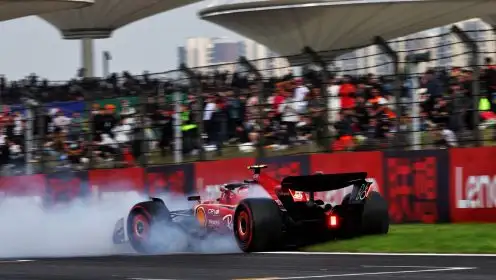
Protest lodged by rival team over Carlos Sainz red flag in Chinese GP qualifying
A rival team has decided to protest the results of qualifying at the Chinese Grand Prix, following Carlos Sainz's red flag in Q2...
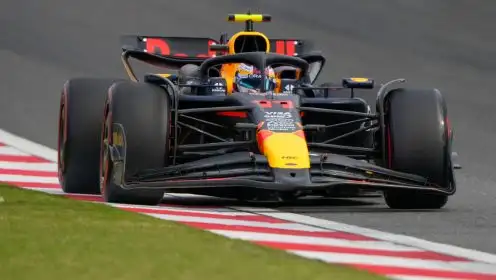
Christian Horner admits Red Bull front row ‘lucky’ following Q1 close call
Red Bull were lucky to come away with the front row for the Chinese Grand Prix, Christian Horner has admitted...
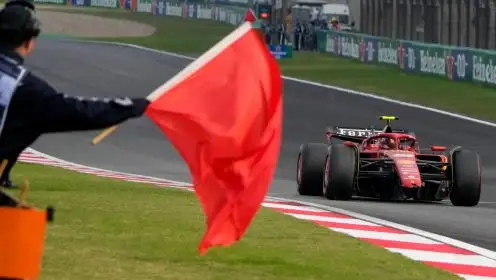
Carlos Sainz mistake brings out red flags during Chinese GP qualifying
Carlos Sainz brought out the red flags during qualifying for the Chinese Grand Prix, crashing his Ferrari during Q2...

Charles Leclerc points finger at ‘over the line’ Carlos Sainz over late-race battle
Charles Leclerc said Carlos Sainz was "over the line", while the Spaniard apologised after their late-race battle in the Chinese GP Sprint...
- F1 Explained
- Standings & Results
- Formula 1 Circuit Maps
- Albert Park Grand Prix Circuit
- Autodromo Enzo e Dino Ferrari
- Autódromo Hermanos Rodríguez
- Autódromo José Carlos Pace
- Autodromo Nazionale Monza
- Bahrain International Circuit
- Baku City Circuit
- Circuit de Barcelona-Catalunya
- Circuit de Monaco
- Circuit de Spa-Francorchamps
- Circuit Gilles Villeneuve
- Circuit of the Americas
- Circuit Zandvoort
- Hungaroring
- Jeddah Street Circuit
- Las Vegas Strip Circuit
- Lusail International Circuit
- Marina Bay Street Circuit
- Miami International Autodrome
- Red Bull Ring
- Shanghai International Circuit
- Silverstone Circuit
- Suzuka International Racing Course
- Yas Marina Circuit
- Emilia Romagna
- Great Britain
- Netherlands
- Saudi Arabia
- United States
- Carlos Sainz Jr.
- Charles Leclerc
- Daniel Ricciardo
- Esteban Ocon
- Fernando Alonso
- George Russell
- Guanyu Zhou
- Kevin Magnussen
- Lance Stroll
- Lando Norris
- Lewis Hamilton
- Logan Sargeant
- Max Verstappen
- Nico Hulkenberg
- Oscar Piastri
- Pierre Gasly
- Sergio Pérez
- Valtteri Bottas
- Yuki Tsunoda

Under The Hood: Exploring The Power Dynamics Of F1 Engine Specs
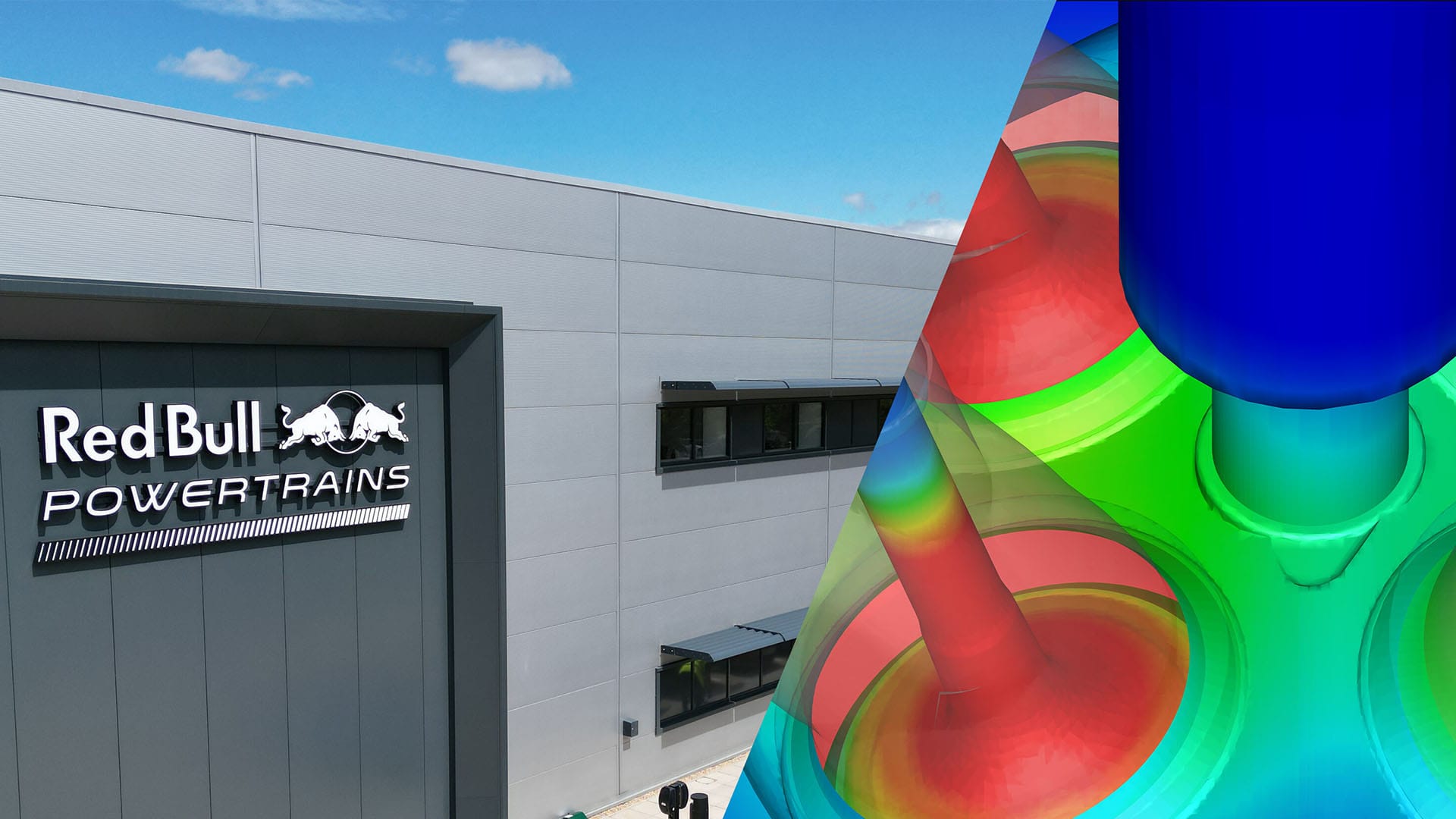
Page Contents
The F1 engine has a rich history that dates back to the late 1940s. Over the years, the sport has seen various engine regulations and formulae aimed at enhancing performance and competitiveness on the track. These regulations have evolved with the changing times and advancements in technology.
One of the most significant developments in Formula One engines occurred in 2014 when the sport introduced hybrid power units. These power units combine a traditional internal combustion engine with an electric motor and control electronics, giving rise to a new era of engine technology.
The transition to hybrid power units brought about several benefits, including increased power output, improved fuel efficiency, and decreased environmental impact. These power units harness both kinetic and mechanical energy recovery systems to generate extra power, making the engines more efficient and sustainable.
Furthermore, engine regulations were put in place to ensure fairness and competitive balance. These regulations govern aspects such as engine capacity, maximum speed, and minimum weight, ensuring that all teams have equal opportunities to succeed on the track.
As Formula One continues to push the boundaries of engine technology, engine manufacturers are constantly working towards improving engine reliability, performance, and efficiency. With the integration of sustainable fuels and advancements in engine tuning, Formula One engines are continuously evolving to meet the demands of this high-intensity sport.

F1 Engine History
The history of Formula 1 engines is rich and diverse, reflecting the constant evolution of technology within the sport. In the late 1960s, engines with internal combustion became the dominant power units in Formula 1, and this tradition continues to this day. Over the years, engine regulations have undergone significant changes, resulting in a reduction in engine capacity and the introduction of turbo engines. Today, the engines used in Formula 1 are V6 turbo engines with a 3.0-litre engine capacity. Engine development and tuning are crucial aspects of the sport, as teams and engine manufacturers constantly strive to improve performance gains while ensuring engine reliability. The introduction of energy recovery systems, such as kinetic and regenerative braking systems, has further enhanced the overall power output and efficiency of the engines. Additionally, sustainability is an important factor, with the use of sustainable fuels being explored to reduce environmental impact. Overall, the history of Formula 1 engines is a testament to innovation, competitiveness, and the pursuit of excellence in motorsports.
From 1947 to 1953, Formula One engines operated under the regulations of pre-war voiturette engine rules. These regulations allowed for a wide power range, with engines available in both naturally aspirated and supercharged versions. The atmospheric engines had a maximum capacity of 4.5 liters, while the supercharged engines were limited to 1.5 liters of displacement.
During this era, one notable example was the BRM Type 15, which featured a 1.5-liter supercharged engine. This engine was capable of producing a considerable amount of power, demonstrating the potential of the smaller displacement engines in delivering impressive performance.
The 1947-1953 period saw a diverse range of engines being used in Formula One, with teams exploring different configurations and power outputs. These engines played a crucial role in shaping the early years of the sport, as manufacturers and teams sought to develop powerful and reliable engines that could propel their drivers to victory on the race track.
Overall, the era of 1947-1953 Formula One engines was marked by experimentation and innovation, as teams and manufacturers sought to push the boundaries of engine technology and performance. The use of pre-war voiturette engine regulations, with a maximum capacity of 4.5 liters for atmospheric engines and 1.5 liters for supercharged engines, allowed for a wide range of power outputs and engine configurations, contributing to the excitement and diversity of early Formula One racing.
During the period between 1954 and 1960, significant changes occurred in the history of Formula 1 engines. One notable change was the reduction in engine size for naturally-aspirated engines. The engine capacity was limited to 2.5 liters, which brought about a shift in the overall power and performance of the vehicles. Additionally, supercharged cars were restricted to a maximum capacity of 750 cc.
Despite these limitations, the power range of the naturally-aspirated engines still reached impressive levels, with some engines producing up to 290 horsepower. During this time, there were no supercharged engines built specifically for the World Championship, indicating a shift towards naturally-aspirated engines as a dominant force in Formula 1.
Overall, the period from 1954 to 1960 marked a transition in engine specifications and regulations in Formula 1. The reduction in engine size for naturally-aspirated engines, along with the limitation of supercharged cars, created an environment where the power range and performance capabilities of the engines were enhanced, thus setting the stage for further advancements in the future.
During the period of 1961-1965, Formula One witnessed significant advancements and changes in its engines. One of the key transitions during this time was the shift from the 2.5-liter engine formula to the reduced engine 1.5-liter formula. This change aimed to reduce costs and increase competition among manufacturers.
The reduced engine formula not only impacted the size of the engines but also increased the average power output. With the reduction in engine capacity, engine builders had to focus on extracting more power and efficiency from the smaller units. As a result, the average power of Formula One engines saw a substantial rise during this period.
Another significant change was the introduction of mid-engined cars. This shifted the weight distribution, resulting in improved handling and better cornering capabilities. With the engine now located behind the driver, the placement enhanced overall performance, giving drivers more control and allowing for faster lap times.
These advancements in engine technology and the introduction of mid-engined cars played a crucial role in shaping the future of Formula One. The transition to the reduced engine formula and the increase in overall power helped enhance the competitive nature of the sport. This period marked a significant shift for Formula One as it continued to evolve and push the boundaries of performance engineering. These changes set the stage for further innovations in the years to come, leading to the Formula One we know today.
The epoch spanning from 1966 to 1986 in the realm of Formula One engines was nothing short of a revolutionary period, marked by significant technological advancements and strategic shifts that would shape the future of the sport. In 1966, Formula One witnessed a pivotal change in its engine regulations, transitioning from the 1.5-litre engines to a more powerful and robust 3.0-litre capacity, which opened new horizons for power and speed in the racing world. This era was characterized by the dominance of the Ford-Cosworth DFV engine, which made its debut in 1967 and quickly became the power unit of choice for numerous teams, owing to its potent combination of power, reliability, and accessibility. The DFV, designed by Keith Duckworth, not only redefined performance standards but also democratized racing by providing independent teams with a competitive engine that could challenge the established manufacturers.
As the 1970s unfolded, the landscape of Formula One began to witness the emergence of turbocharging technology, which promised to unlock new potentials in speed and performance. Initially, teams were skeptical about the reliability and viability of turbocharged engines, given their susceptibility to mechanical failures and the challenges posed by turbo lag. However, the persistent endeavors of engineers and the audacious spirit of teams like Renault, who introduced their turbocharged engine in 1977, gradually altered perceptions. The turbo era, which reached its zenith in the 1980s, was synonymous with unparalleled speeds and staggering power outputs, with engines sometimes producing in excess of 1000 horsepower in qualifying trim. The spectacle of these formidable machines battling on the track captivated audiences worldwide and etched an indelible mark on the annals of motorsport history.
Yet, the sheer power of the turbocharged engines was not without its challenges and controversies. The formidable force exerted by these power units necessitated advancements in tire technology and chassis design to manage the enhanced power and speed effectively. Moreover, concerns regarding safety began to permeate the sport, as the machines were pushing the boundaries of what was deemed controllable and secure. The governing bodies, grappling with the dual imperative of ensuring safety while preserving the competitive spirit of the sport, introduced a slew of regulations aimed at curbing the excesses of the turbo era. These included restrictions on boost pressure and fuel capacity, which compelled teams and engineers to navigate through a complex matrix of maximizing power while adhering to the regulatory confines.
In navigating through the myriad of challenges and opportunities presented during this period, Formula One witnessed a confluence of engineering ingenuity, strategic mastery, and audacious driving that would lay the foundation for the subsequent eras of the sport. The tales of the 3.0-litre and turbocharged engines, with their symphony of power and complexity, continue to resonate as a testament to the relentless pursuit of speed, innovation, and glory that defines Formula One.
1987–1988 marked a significant period in the history of F1 engines, characterized by the dominance of turbocharged power units. Turbocharging, a form of forced induction, enabled teams to extract higher power outputs from their engines. However, due to concerns over safety and increased costs, turbochargers were eventually banned from the sport.
During this time, the leading engine suppliers were Honda and TAG-Porsche. Honda’s RA167E V6 turbo engine proved to be a force to be reckoned with, delivering impressive performance gains. This engine, combined with the McLaren MP4/3 chassis, propelled Ayrton Senna to his first World Championship title in 1988.
TAG-Porsche’s P01 V6 engine also made a significant impact on the field. Utilized by McLaren’s other driver, Alain Prost, the TAG-Porsche power unit contributed to the team’s overall dominance during this era.
Other notable engine models included Honda’s RA166E and Ferrari’s 033D V6. These engines further highlighted the advancements in engine technology and the push for greater power outputs.
The turbo era of F1 engines sparked intense competition among engine manufacturers, spurring innovations in engine development and tuning. However, the ban on forced induction would soon come into effect, leading to a shift in engine regulations and the return to naturally aspirated engines.
The turbo domination of 1987–1988 showcased the power and potential of forced induction engines, leaving a lasting impact on the sport’s history.
The years 1989 through 1994 in Formula One were marked by a cascade of technological innovations, regulatory changes, and poignant moments that would indelibly shape the trajectory of the sport. The commencement of this era was underscored by the phasing out of the immensely powerful turbocharged engines, which had defined the previous epoch with their staggering speed and formidable power. The 1989 season introduced a new set of regulations that mandated the use of 3.5-litre naturally aspirated engines, heralding a new chapter that prioritized precision engineering and strategic acumen over sheer power.
In this new dawn, the prowess of the Honda V10, the Ford V8, and subsequently, the Renault V10 engines became emblematic of success on the track, intertwining their legacies with those of the teams and drivers they propelled to victory. The engines, while not as overpoweringly fast as their turbocharged predecessors, brought forth a nuanced complexity in terms of strategy and reliability, where the orchestration of pit stops, fuel management, and tire wear became pivotal in clinching victory.
The technological advancements were not confined to the engines alone. The period witnessed the advent and proliferation of semi-automatic gearboxes, active suspension systems, and traction control, all of which sought to harness the power of the new generation of engines effectively and efficiently. Teams like Williams and McLaren were at the forefront of these innovations, leveraging technological prowess to gain a competitive edge in the fiercely contested battles on the track.
However, the era was also punctuated by a series of events that would cast a somber shadow over the sport. The tragic weekend at Imola in 1994, which witnessed the loss of Ayrton Senna and Roland Ratzenberger, became a stark reminder of the inherent dangers of motorsport and catalyzed a renewed and enduring emphasis on safety within Formula One. The aftermath of the tragedy saw the introduction of a myriad of safety measures and regulations, aimed at safeguarding the lives of the drivers, team personnel, and spectators.
In the midst of triumph and tragedy, the period from 1989 to 1994 encapsulated a microcosm of the myriad facets of Formula One, intertwining moments of exhilarating speed, technological advancements, strategic masterclasses, and poignant reflections on the fragility of life. The echoes of this era reverberate through the annals of the sport, serving as a reminder of the relentless pursuit of excellence and the imperative of preserving the sanctity of life in the high-octane world of Formula One.
From 1995 to 2005, Formula One entered a period where technological advancements, regulatory shifts, and the emergence of iconic rivalries coalesced to sculpt a distinctive chapter in its storied history. The mid-90s ushered in a new era with a reduction in engine size from 3.5-litre to 3.0-litre, a move that sought to curtail speeds while amplifying the importance of aerodynamic efficiency and strategic prowess within the sport.
In the realm of power units, the V10 engines became synonymous with the auditory and performance identity of Formula One during this period. The scream of the V10s, produced by the likes of Renault, Ferrari, and Mercedes, became emblematic of an era where engineering ingenuity was married to a raw, unbridled pursuit of speed. Teams like Ferrari, Williams, and McLaren, each with their unique strengths and philosophies, engaged in fierce battles that unfolded on tracks across the globe, providing a spectacle that enthralled audiences and deepened the global footprint of the sport.
The era was also illuminated by the rise of legendary figures and the crafting of rivalries that would be etched into the annals of the sport. The duel between Michael Schumacher and Mika Häkkinen, representing Ferrari and McLaren respectively, captivated fans with a blend of skill, determination, and moments of sheer audacity that defined the pinnacle of motorsport. Schumacher, with his meticulousness and unyielding will to win, and Häkkinen, with his calm demeanor juxtaposed with his aggressive driving style, provided a narrative that transcended the confines of the racetrack, embodying a battle of not just machines, but of contrasting personalities and approaches to the sport.
Technological innovations also permeated this epoch, with teams exploring advancements in areas such as traction control, launch control, and various electronic driver aids. These technologies, while enhancing performance, also sparked debates regarding the balance between driver skill and technological intervention, a discourse that would shape regulatory decisions in the years to come.
The latter part of this period witnessed a dominant reign by Ferrari and Michael Schumacher, a partnership that would rewrite the record books and become a symbol of excellence and controversy in equal measure. Their dominance, while showcasing a masterful execution of strategy, development, and driving, also prompted reflections on competition and regulations within the sport. The FIA, in response to the evolving dynamics, introduced a series of regulatory changes aimed at enhancing competition, safety, and spectacle, including alterations to qualifying formats and the points system.
Navigating through a decade marked by intense rivalries, technological exploration, and regulatory evolution, Formula One wove a tapestry that mirrored the complexities and exhilarations of human endeavor. The period from 1995 to 2005, with its triumphs, controversies, innovations, and tragedies, stands as a testament to the sport’s perpetual motion forward, always in pursuit of greater speeds, competition, and narratives that resonate across generations.
From 2006 to 2013, Formula One experienced significant changes in engine regulations. During this period, the engines had a maximum capacity of 2.4 liters and were designed as 90° V8. The regulations also mandated a minimum weight of 95 kg for the engines.
To further control the engines’ performance, there were restrictions on certain components. For instance, fuel injectors were limited to a maximum of eight per engine, while spark ignition systems were allowed only a single coil per cylinder.
These regulations were put in place to maintain a level playing field and ensure fair competition among the teams. Additionally, they aimed to maintain a balance between engine power and reliability.
In terms of performance, the engines produced impressive power outputs. They were capable of revving up to a maximum of 19,000 rpm. This high engine speed allowed for thrilling races with quick acceleration and impressive speeds on the straights.
Overall, the 2006-2013 era showcased the evolution of Formula One engines. These engines adhered to strict regulations, ensuring fair competition while still providing exhilarating power and performance on the track.
From 2014 to 2021, Formula One saw significant changes in its engines, which had a profound impact on the sport. During this period, the sport transitioned to using 1.6-litre V6 hybrid engines, marking a departure from the previous 2.4-litre V8 engines. These new engines emphasized a more sustainable approach by incorporating energy recovery systems.
The introduction of these 1.6-litre V6 hybrid engines brought about an increase in horsepower and a reduction in engine capacity. The engines now featured a turbocharger and were equipped with energy recovery systems such as the Kinetic Energy Recovery System (KERS) and the Motor Generator Units (MGU-K and MGU-H). These systems allowed for the recovery and utilization of both kinetic and heat energy, resulting in improved performance and efficiency.
Several engine manufacturers were involved in the development and supply of these power units during this time, including Mercedes, Ferrari, and Renault. However, 2021 saw the withdrawal of Honda as a power unit supplier, leaving three engine manufacturers on the grid.
Overall, the period from 2014 to 2021 witnessed a transformation in Formula One engines, with the introduction of 1.6-litre V6 hybrid engines, the inclusion of energy recovery systems, and an increase in horsepower. These changes not only made the engines more efficient and eco-friendly but also added new dimensions to the sport, pushing the boundaries of technology and performance.
In the period spanning from 2022 to 2025, Formula 1 witnessed significant changes in engine regulations as a result of negotiations with constructors and potential manufacturers. These changes aimed to strike a balance between technological advancement, cost control, and sustainability.
One of the key agreements reached during this period was the retention of the 1.6L V6 configuration, which had been introduced in 2014. This decision was in line with the sport’s goals of maintaining a balance between power and efficiency while reducing carbon emissions.
Another notable change was the abandonment of the Motor Generator Unit–Heat (MGU-H) system, which had been a part of the power units since 2014. The removal of the MGU-H aimed to simplify the power unit and reduce costs, while still maintaining high levels of performance.
To achieve a level playing field and encourage the entry of new manufacturers, a freeze on power unit design was also implemented during this period. This freeze meant that engine manufacturers could no longer develop their power units beyond a certain point, ensuring cost control and preventing a costly engine development arms race.
Overall, the changes implemented in the 2022–2025 period aimed to strike a balance between performance, sustainability, and cost control. By retaining the 1.6L V6 configuration, removing the MGU-H system, and implementing a freeze on power unit design, Formula 1 aimed to create a sustainable and competitive environment for teams and manufacturers.
2026 onwards
In 2026, Formula One is set to introduce new engine regulations that will bring significant changes to the power units used in the sport. One of the key changes is the modification of the turbocharged 1.6 V6 internal combustion engine configuration. This alteration aims to enhance both performance and sustainability.
Another notable change is the increase in the electrical energy capacity of the MGU-K (Motor Generator Unit – Kinetic), which will provide teams with more electrical power during races. At the same time, the current MGU-H (Motor Generator Unit – Heat) will be removed from the power unit.
Additionally, the new engine regulations will implement fuel flow rates based on energy, instead of the current strict limits on fuel consumption. This change will allow teams to efficiently manage their fuel loads while optimizing performance.
An exciting development in this transition is Audi’s recent announcement to become a power unit manufacturer starting 2026. This move highlights the appeal and potential of Formula One’s new engine regulations, attracting new engine manufacturers to the sport.
Overall, the upcoming changes promise to deliver more sustainable, yet high-performance power units for Formula One, shaping the future of the sport.
F1 engine rules
Formula 1 engines are subject to strict rules and regulations that govern their type, specifications, and limitations. Currently, the engines used in Formula 1 are known as power units, consisting of an internal combustion engine combined with an electric motor and control electronics. The engine regulations dictate several key aspects of these power units.
One of the main restrictions is on engine capacity, which is currently set at a maximum of 1.6 liters. Furthermore, the power output of the engine is limited to an approximate 850 horsepower. In addition to these limitations, the engine manufacturers and teams must adhere to fuel usage restrictions. They must use sustainable fuels with specific energy content limits and adhere to a maximum fuel load for each race.
Another important aspect is energy recovery systems, which aim to harness and reuse energy that would otherwise be wasted. Formula 1 cars utilize both kinetic and mechanical energy recovery systems, converting energy from braking and exhaust gas into electrical power. This energy can then be deployed for an extra power boost during overtaking or used to reduce fuel consumption.
When designing and developing their engines, manufacturers and teams must consider factors such as engine reliability, engine weight, and engine efficiency. The engines need to withstand high engine speeds, endure harsh race conditions, and comply with the minimum weight requirements. Moreover, engine builders must continually work on engine development to achieve performance gains within the confines of the regulations.
F1 Engine Rules Explained
Components and allocations.
F1 power units consist of several elements: the internal combustion engine (ICE), motor generator unit-heat (MGU-H), motor generator unit-kinetic (MGU-K), turbocharger, energy store (ES), control electronics (CE), and exhaust. For the 2023 season, drivers are allowed to use up to four ICEs, MGU-Hs, MGU-Ks, and turbochargers, two energy stores and control electronics, and eight of each of the four elements that make up a set of exhaust systems without incurring penalties.
Penalty Application
Penalties are applied when drivers exceed the allocated number of power unit components. The first time a driver exceeds the allocation of any of the seven elements, a 10-place grid penalty is applied. Subsequent breaches for the same element result in a five-place grid drop. If a driver accumulates penalties exceeding 15 grid places, they must start the race from the back of the grid. The FIA has clarified the process to determine grid positions when multiple drivers incur penalties.
Engine Usage and Penalties
A new power unit element is considered ‘used’ once the car leaves the pit lane during an official session. If a driver uses more power unit elements than allowed, grid place penalties are imposed at the first event where each additional element is used. If a driver introduces more than one of the same element that is subject to penalties, only the last element fitted may be used at subsequent events without further penalty.
Engine Freeze
An engine freeze was implemented in 2022 and is set to run until the end of the 2025 campaign. During this period, manufacturers may apply to the FIA to make modifications to power unit elements for reliability, safety, cost-saving, and minimal incidental changes. The engine freeze allows manufacturers to focus their resources on developing new power units for 2026 without the need to continually enhance the current generation of engines.
Achieving 1,000 HP from 1.6-Liter F1 Engines
Formula 1 engines are a marvel of modern engineering, achieving a staggering 1,000 horsepower from a mere 1.6 liters of displacement. This incredible feat is accomplished through a combination of advanced internal combustion engine technology and a sophisticated hybrid system.
Hybrid System: MGU-K and MGU-H
The hybrid system in F1 engines consists of two main components: the Motor Generator Unit – Kinetic (MGU-K) and the Motor Generator Unit – Heat (MGU-H). The MGU-K is capable of providing an additional 160 horsepower by converting kinetic energy generated during braking into electrical energy, which is then stored and can be used to boost power to the crankshaft. On the other hand, the MGU-H is connected to the turbocharger, converting heat energy from exhaust gases into electrical energy, which can either be used to power the MGU-K or be stored for later use. This system not only provides additional power but also mitigates turbo lag, enhancing engine efficiency and performance.
Pre-Chamber Ignition Technique
One of the key technologies that enable such high power output from a small displacement is the pre-chamber ignition. This involves a secondary combustion chamber inside each cylinder that ignites a small amount of the air-fuel mixture before the main combustion event. The ignited mixture then exits through tiny holes into the main cylinder, causing a much larger, more powerful ignition of the remaining air-fuel mixture. This technology allows for more efficient combustion and significantly enhances power output.
Turbocharging and Fuel Efficiency
Turbocharging is another crucial technology that enables F1 engines to achieve such high power outputs. The turbocharger increases the density of the air entering the engine, allowing for more fuel to be burned and thus more power to be produced. Furthermore, F1 engines are subject to strict fuel flow rate and capacity regulations, necessitating extremely efficient combustion. Engineers optimize every aspect of the combustion process, from the air-fuel mixture to the ignition timing, to extract the maximum possible power from every drop of fuel.
Material and Design Innovation
The materials and design of the engine components are also crucial in achieving high power outputs. Lightweight, durable materials are used to withstand the extreme pressures and temperatures within the engine, while advanced design techniques ensure optimal airflow and combustion efficiency. Every component of the engine, from the pistons to the exhaust, is meticulously designed and tested to ensure it contributes to the overall performance and efficiency of the power unit.
In essence, the achievement of 1,000 horsepower from just 1.6 liters in F1 engines is a symphony of advanced technologies, innovative engineering, and strategic management of energy resources. The combination of hybrid technology, pre-chamber ignition, turbocharging, and sophisticated materials and design allows these power units to produce incredible power while adhering to the stringent regulations of the sport.
F1 engine suppliers for 2023
In 2023, teams are powered by engines from a select few suppliers, each bringing their unique engineering prowess to the fore. The F1 engine suppliers, namely Ferrari, Mercedes, Honda, and Renault, have forged alliances with specific teams, providing them with the power units that are the heartbeat of every F1 car.
Teams and Their Engine Suppliers
Multi-team suppliers: ferrari and mercedes.
Ferrari and Mercedes, two titans in the F1 engine supplier domain, extend their engineering expertise to multiple teams. Ferrari supplies its power units to Scuderia Ferrari, Alfa Romeo Racing, and Haas F1 Team, while Mercedes provides its engines to Mercedes-AMG Petronas, McLaren F1 Team, Aston Martin Cognizant, and Williams Racing. These suppliers, with their rich history and proven track record in F1, empower various teams with the requisite power and reliability to compete at the pinnacle of motorsport.
Exclusive Supplier: Red Bull and Honda
In a distinct approach, Red Bull, through its partnership with Honda, exclusively supplies engines to its own teams: Red Bull Racing and Scuderia AlphaTauri. This exclusivity allows for a concentrated focus on aligning the engine development and performance with the specific needs and strategies of the Red Bull teams.
The Future Landscape: Audi and Ford
Looking towards the future, the F1 engine supplier landscape is set to witness a significant shift with the entry of Audi and Ford in 2026. These automotive giants will bring their own engineering philosophies and technological innovations to the sport, potentially reshaping the competitive dynamics and technological advancements within F1.
In conclusion, the F1 engine suppliers, with their technological innovations and strategic partnerships with teams, play a crucial role in defining the performance and competitive narratives within the sport. The future, especially with the entry of Audi and Ford, holds promising prospects for further evolution and excitement in the world of Formula 1.

Formula 1 Engine Fast Facts
Power unit specification.
- Minimum Weight : 145 kg
- Power Unit Perimeter : Includes Internal Combustion Engine (ICE), Motor Generator Unit – Kinetic (MGU-K), Motor Generator Unit – Heat (MGU-H), Turbocharger (TC), Energy Store (ES), and Control Electronics (CE).
- Power Unit Allocation : Three ICE/TC/MGU-H per driver per season and Two MGU-K/ES/CE per driver per season.
Internal Combustion Engine (ICE)
- Capacity : 1.6 litres
- Cylinders : Six
- Bank Angle : 90
- No. of Valves : 24
- Max RPM ICE : 15,000 rpm
- Max Fuel Flow Rate : 100 kg/hour (above 10,500 rpm)
- Fuel Injection : High-pressure direct injection (max 500 bar, one injector/cylinder)
- Pressure Charging : Single-stage compressor and exhaust turbine on a common shaft
- Max RPM Exhaust Turbine : 125,000 rpm
Energy Recovery System (ERS)
- Architecture : Integrated Hybrid energy recovery via electrical Motor Generator Units
- Energy Store : Lithium-Ion battery solution of 20 kg regulation weight
- Max energy store/lap : 4 MJ
- Max RPM MGU-K : 50,000 rpm
- Max Power MGU-K : 120 kW (161 hp)
- Max Energy Recovery / Lap MGU-K : 2 MJ
- Max Energy Deployment / Lap MGU-K : 4 MJ (33.3s at full power)
- Max RPM MGU-H : 125,000 rpm
- Max Power MGU-H : Unlimited
- Max Energy Recovery / Lap MGU-H : Unlimited
- Max Energy Deployment / Lap MGU-H : Unlimited
Fuel & Lubricants
- Fuel : PETRONAS Primax
- Lubricants : PETRONAS Syntium
- Functional Fluids : PETRONAS Tutela Transmission/Hydraulic/Energy Recovery System (ERS) Cooling Fluids
The above stats are for the Mercedes-AMG M10 EQ Power+ Power Unit .
Popular posts
- What Is Formula 1 DRS? | DRS In F1 Explained
- Formula 1 Circuit Maps | F1 Tracks
- The Complete Beginners Guide to Formula 1
- How Much Do Formula 2 Drivers Make?
- How Much Do F1 Engineers Earn?
More in News
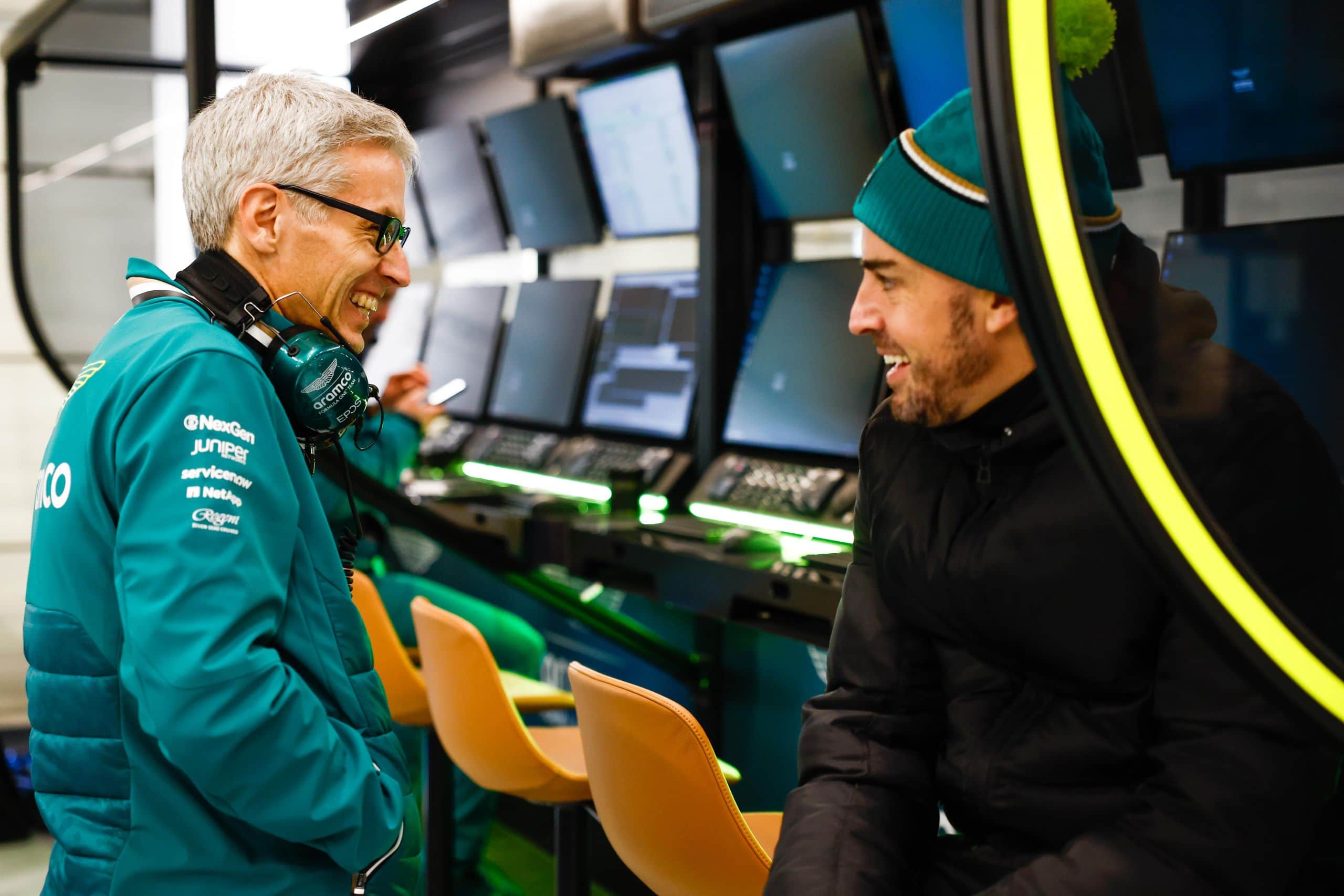
Aston Martin’s Team Principal On Alonso And Stroll
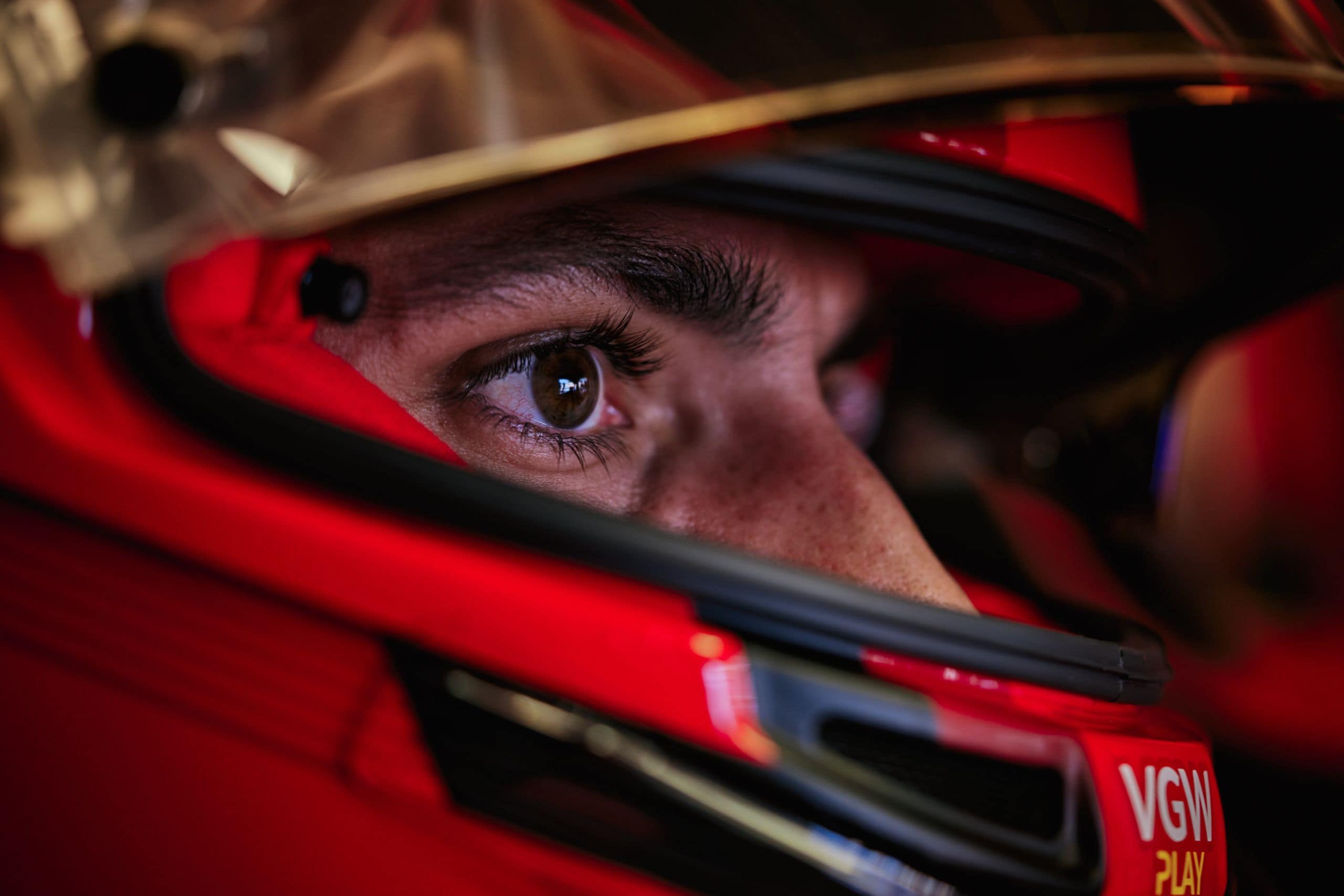
No Easy Day Ahead For Carlos Sainz At China
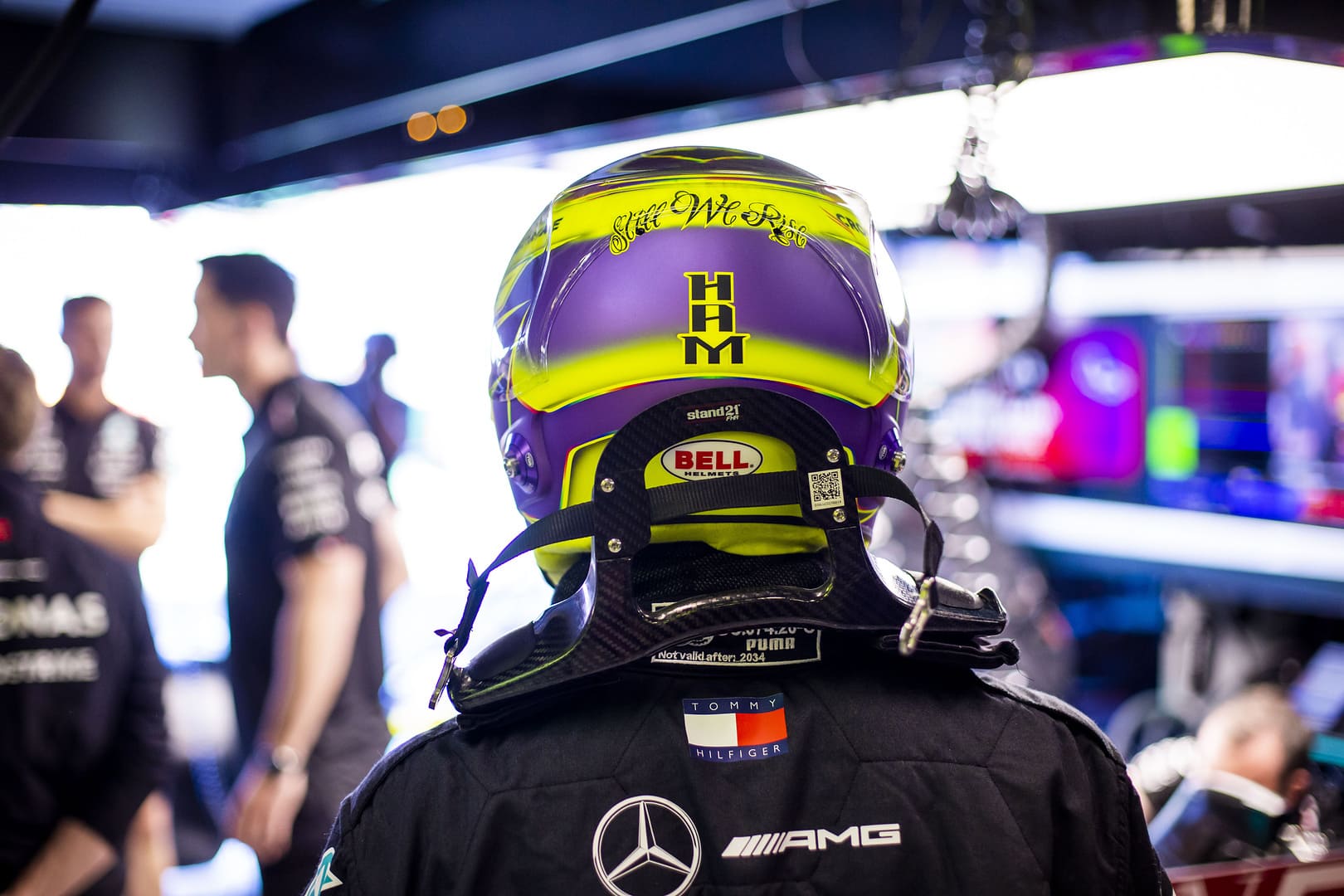
Is The Chinese Grand Prix Another Complicated Battle For Lewis Hamilton?
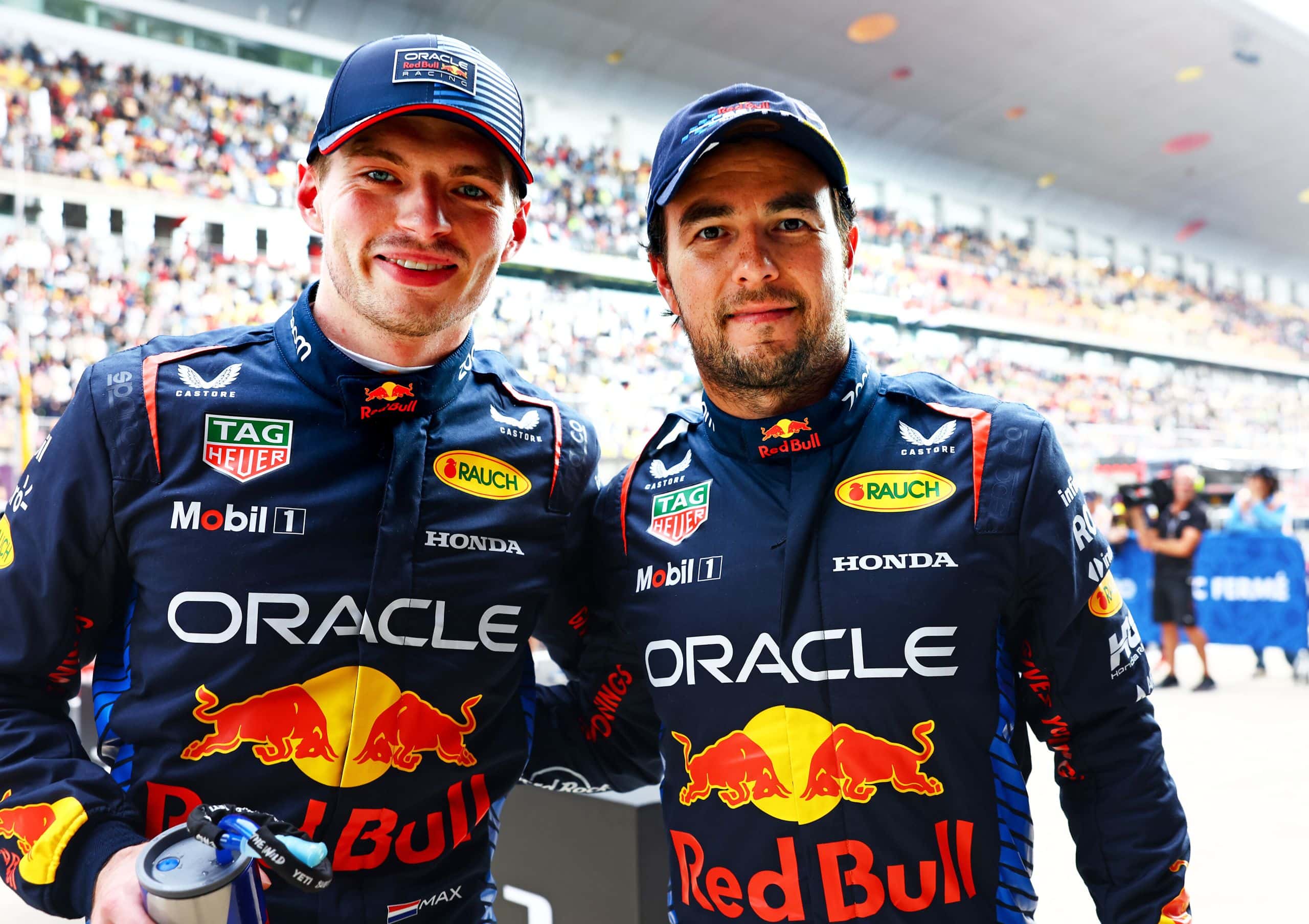
Perfect Day For Max Verstappen In Shanghai
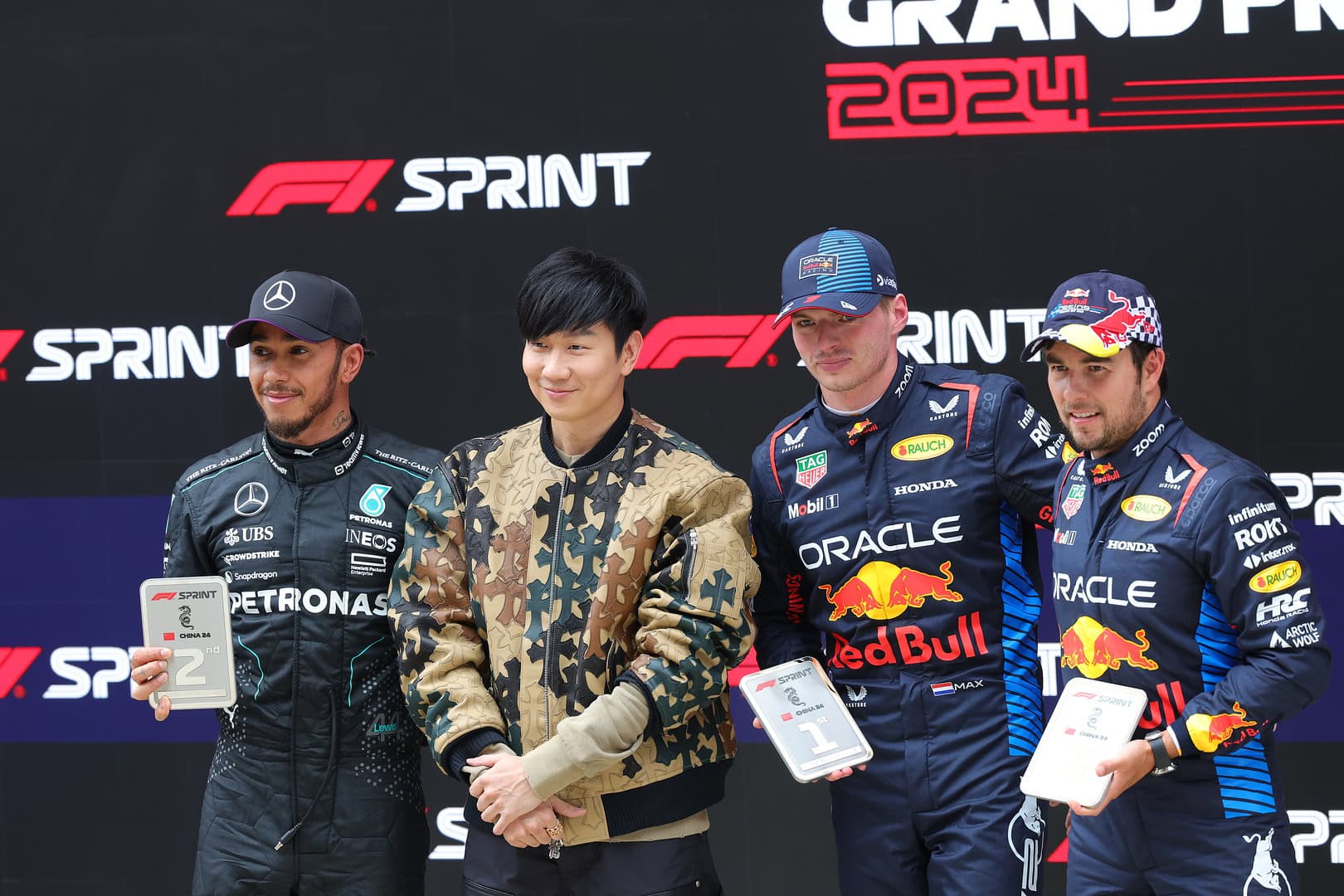
Sprint Podium Overshadowed By Qualifying Disaster For Lewis Hamilton
Trending on f1 chronicle.
Save This Information
Want to save this information without bookmaking the whole site? Enter your details below and we'll send it straight to your inbox now
Join Our Pit Crew
Get the latest F1 insights delivered straight to your inbox. Don't miss a single lap of the action!
OUR BEST CONTENT - DELIVERED
Get premium F1 content straight to your inbox - FREE
We don't have anything to sell, so you won't get warm and fuzzy emails followed by a pitch. But you will get world-class F1 coverage.

- Formula 1 Powerboat Championship
- F1PC Series Rule Book
- Boat Classes
- Race Videos
- Formula One History
- 2 Seater Experience
- Mercury Racing
- Sponsorship Opportunities
- Sponsor Logos
- JH Performance Boats
- MOTO Marketing Group
- Racing Communications
- Sea-Way Marine
- Seebold Sports
- VP Race Fuels
- 2024 Series Schedule
- Events Calendar
- Freeport Riverfest
- Lake Havasu 2023
- Lake Havasu Classic 2022
- Alton Midwest Nationals
- Shreveport Red River Rumble 2024
- 2023 Season Press Release
- Mercury Racing Sponsorship
- Axcel Sports
- Formula One Drivers
- Formula Light Drivers
- Tri Hull Drivers
- J Hydro Drivers
- Driver Info Form
- F1 PC Legends
- Live Timing
- Formula One
MERCURY RACING TO SPONSOR FORMULA ONE POWERBOAT RACING SERIES
Mercury racing 360 apx outboard to power two-seat ride experience boat.
FOND DU LAC, Wis. (April 20, 2022) – Mercury Racing has entered a two-year sponsorship program with the Formula One Powerboat Championship series. The agreement is for the 2022 and 2023 racing seasons and names Mercury Racing the Official Marine Engine and Drive Sponsor. For the next two seasons a Mercury Racing 360 APX outboard will power the Formula One Race Ride Experience, a two-seat tunnel boat available for high-speed media and VIP demonstration laps at each race venue.
“Mercury Racing is excited to be partnering with the Formula One Powerboat Championship Series,” said Mercury Racing General Manager Stuart Halley. “Our support of the premier in-shore circuit-racing series in North America reflects a renewed focus on outboard circuit racing powered by the Mercury Racing Apex Series competition outboard motors. Mercury Racing also appreciates that Formula One and the powerboat racing community is embracing a shift to more-sustainable and modern engines.”
The five event 2022 Formula One Powerboat Championship Series begins April 29-May 1 on the Neches River at the Port Neches Riverfest on the Texas Gulf Coast. The season continues with events in Pittsburgh, Pa. (July 28-31), OPC Nationals at Springfield, Ohio (Aug. 26-28), Highlands, Texas (Sept. 30-Oct. 2) and the Havasu Classic Championships at Lake Havasu, Ariz. (Oct. 14-16). Mercury Racing will have a presence throughout each race weekend.
“Mercury Racing outboards have powered the top classes on the Formula One series, and we welcome its rededication to outboard competition with both this sponsorship and the development of the Apex Series, a new generation of competition outboard power,” said Tim Seebold, Managing Director of the Formula One Powerboat Championship.
Each event will feature multiple boat classes, including the top Formula One tunnel boat class. The new Mercury Racing 200 APX competition outboard is eligible for Formula One in 2022. Several top teams are expected to race with the 200 APX motor, a 3.4-liter V6 four-stroke model. Rated at more than 200 horsepower, the 200 APX outboard offers racers a very durable powerhead and the latest in four-stroke engine technology, while reducing exhaust emissions by 90 percent compared to the Mercury Racing 200 SX two-stroke outboard currently in use in these classes, which is no longer in production.
The Mercury Racing 360 APX , a new 4.6-liter V8 competition outboard, has been approved for the UIM F1H2O World Championship, the flagship international series of single-seater inshore circuit powerboat racing. It will also offer guests a thrilling ride in the Formula One Race Ride Experience two-seat boat. At most venues those rides will be available for fans purchasing a VIP ticket package. The boat will be equipped with video cameras to capture each guest experience. The Ride Experience boat will also be used as a pace boat during competition.
About Mercury Racing
Based in Fond du Lac, Wis., Mercury Racing, a division of Mercury Marine, is a leading provider of high-performance marine propulsion systems for discriminating boaters worldwide, offering an exciting and fulfilling power boating experience on the water. Using leading-edge technology, Mercury Racing produces high-performance outboards, sterndrives, propellers, parts and accessories. Mercury Marine is a division of Brunswick Corp. (NYSE: BC), the world’s largest manufacturer of pleasure boats, marine engines, and accessories.
You are using an outdated browser. Please upgrade your browser to improve your experience and security.

INSIDE F1H2O
- What is F1H2O?
- The Championship
- The Grand Prix
- Rescue&Safety
The UIM F1H2O World Championship is the 'flagship' international series of single-seater inshore circuit powerboat racing.
Highly competitive, intensely challenging, risky and entertaining, the F1H2O World Championship is the ultimate adrenalin rush and regarded as one of the most spectacular and exciting sports in the world.
The series attracts up to 20 of the world's leading drivers and is a sport that has to be seen to be believed as these diminutive tunnel-hull catamarans enter hairpin turns at over 90mph and top 140mph on the straights.
Picture the scene; 18 to 20 sleek, powerful and lightweight catamarans lining up on the start pontoon. Inside each cockpit sits a lone individual peering through a tiny windscreen. One hand grasps the steering wheel, the other poised over the start button. The tension inside the cockpit is intense as the drivers wait for the crucial start. Beyond the cockpit, an eerie silence descends over the entire arena, all attention fixed on the start.
No sooner does the wait end when 10,000hp of highly tuned brute power bursts into life sending the fleet screaming towards the first corner leaving nothing but a glorious fountain of white spray in its wake.
However, with the thrilling high-speed action comes the risk of ruin as drivers endure brain-numbing G-Forces - their rigs taking hairpin turns at over 90mph while they dice deck-to-deck in often zero-visibility.
Now in its 36th year the four decades of the World Championship have witnessed considerable change and evolution; the seventies and eighties saw multiple promoters and two giant corporations of the sport OMC and Mercury vying for supremacy to be the pinnacle of the sport.
OMC were touting their 3.5litre V8 package that became known as the OZ class, Mercury pushing their 2.0litre engine and called the ON class, the disparity in power would soon lead to bitter wrangling and infighting amongst competitors.
The split came in 1981, FONDA was formed running the ON class engine with the OMC backed PRO ONE run series running the OZ class engine, both rival championships claiming the right to use the title World Championship, a dispute settled by the sport's governing body the UIM later that year awarding the OZ class the accolade.
1984 saw the beginning of yet another twist as safety became a major concern with engine development and increasing power of the V8s taking its tragic toll and signaled the slow demise of the OZ class internationally, ending in 1986.
The door was now opening for the existing FONDA World Grand Prix series to reinvent itself. From 1987 to 1989 there was no official UIM World Championship, and with no challenger, the UIM reinstated the World Championship status and in 1990 the FONDA World Grand Prix Series became the UIM F1H2O World Championship, Mercury's 2.0litre engine the preferred power-plant of the time, the Mercury 2.5litre engine coming in in 2000 and used today.
In 1993 the UIM appointed Nicolo di San Germano as Promoter; his ongoing 30 year tenure has brought stability, a new direction, improved safety and an ever broadening geographic footprint encompassing Europe, the Americas, the Middle East and Asia and with this expansion a growing commercial value.
Over the last 38 years the sport has played out 295 Grand Prix in 33 countries across five continents, 15 drivers have captured the World title, 48 becoming members of the illustrious Grand Prix winners club.
Of the 15 World Champions 8 are multiple title winners; Italy's Guido Cappellini is the most decorated winning 10, Italy's Alex Carella and American Scott Gillman with four, France's Philippe Chiappe, Italian Renato Molinari and American Shaun Torrente with three each, Finland's Sami Selio and Britain's Jonathan Jones with two apiece.
While today's F1H2O catamarans bear a striking resemblance to those in action throughout the 1980's there is a world of difference in terms of driver protection and general safety.
The early boats were constructed from thin plywood with drivers sitting in an open, exposed cockpit with the risk of injury a high probability in the case of an accident.
With safety at the forefront of boat development, British designer and racer Chris Hodges set about improving the situation and constructed a safety cell that was produced from an immensely strong composite material.
Instead of the cockpit being part of the main structure Hodges' capsule was separate and was fitted to the hulls and centre section.
For the first time drivers were actually strapped into their seats. The idea was that if a boat was involved in an accident, the timber hulls could break up and absorb the impact forces while the driver remained well protected inside his cell.
The new device proved itself on several occasions and the U.I.M. called for it to become compulsory, and in the early 1990's Burgess introduced canopies that made cockpits fully enclosed.
In the late 1990's further developments saw the introduction of an airbag in the cockpit that would inflate in a crash to ensure the capsule wouldn't sink before rescue crews could attend.
Over the years boat construction has been developed and today few if any are built of timber, now replaced by modern composites.
In 2023 ten teams and 20 drivers from 12 countries will compete at Grand Prix in Europe, Middle East and Asia for the coveted World title, the prestigious number 1 plate will be carried by the defending World Champion Shaun Torrente driving for Abu Dhabi team.
The Union Internationale Motonautique (UIM) is the world governing body for all Powerboating activities. It is fully recognized by the International Olympic Committee (IOC) and is a member of the Association of the IOC Recognized International Sports Federations (ARISF) and of SportAccord for whom the UIM President serves as President and Board member. The UIM has almost 60 affiliated National Federations. Circuit, Offshore, Pleasure Navigation and Aquabike are among the main disciplines. The UIM has signed a Cooperation Agreement with the United Nations Environment Program (UNEP) to further its range of environmental initiatives and to share expertise.
President: Dr. Raffaele Chiulli General Secretary: Thomas Kurth
Idea Marketing is the sole and exclusive worldwide promoter of the UIM F1H2O World Championship, the UIM-ABP Aquabike World and Continental Championships and the UIM H2O Nations Cup World Series.
The company is the worldwide television and commercial rights holder for all Championships and responsible for all commercial, marketing, television, media and organisational activities.
Founder: Nicolo di San Germano Vice President: Lavinia Cavallero
h2oracing.net f1h2o.com aquabike.net
The F1H2O World Championship is the leading formula in single-seater inshore circuit powerboat racing and was sanctioned by the UIM in 1981.
It is a multiple Grand Prix series of eight events taking place in Europe, the Middle East and Asia.
Points allocated at each Grand Prix count towards the overall World Championship standings.
In addition to the World Championship, points are also allocated for the BRM Pole Position and Team Championships and the Fast Lap Trophy.
A three-tiered qualifying session is run over 60 minutes, the multiple lap Grand Prix run over a minimum 45 minutes, not to exceed 60 minutes.
In 2023 ten teams, 20 drivers from 12 countries plus technicians and support staff will compete for the coveted World title.
DAY 1 Documentation and registration Technical scrutineering Drivers' briefing (compulsory for all team managers, drivers and radiomen of each boat) Free practice Boats and racing equipment (including racing gear of the driver) must be in the pits 24 hours before starting the technical scrutineering
DAY 2 Drivers' briefing (compulsory for all team managers, drivers and radiomen of each boat) Free practice Official Qualifying Podium presentation
Pole position and starting line-ups are determined by a three-tiered qualifying session, Q1, Q2 and Q3 preceding each Grand Prix race. Stateof-the-art timing equipment records the performances of each boat to decide the final classification and starting positions.
Q1 : A twenty-minute session with all boats entitled to run multiple laps at any time during the session, with the 12 fastest progressing into Q2. The times set by those that didn't qualify for Q2 denote their starting positions.
Q2 : After a seven-minute break, the times will be reset and the remaining 12 boats will then run a fifteen-minute session - again they may complete as many laps as they want at any time during that period. At the end of the session the six fastest boats will progress into Q3. The times set by those that didn't qualify for Q3 denote their starting positions.
Q3 : The times are reset and the top six boats from Q2 will run all together for 10 minutes and the arrival order at the finish line will decide their start positions.
If a driver is deemed by the officials to have stopped unnecessarily on the circuit or impeded another driver during qualifying, his times may be cancelled
No refuelling allowed during timed trial.
Every race circuit is different in size, but are generally about 2000 meters in distance. Each circuit has at least one long straightaway and several tight turns, mostly left with one or two right turns.
The turns produce a G-force of up to 4.5 on the driver, which means his weight is multiplied 4.5 times as he makes a tight U-turn at over 100 mph.
Water is a constantly changing unstable unpredictable surface and conditions play a major part in the outcome of each Grand Prix.
With water current and wind conditions varying on every lap and spray being continually showered over the tiny console screen, drivers are quite often driving 'blind' at full speed, mere inches away from their rivals.
In the event of a 'barrel-roll' (capsize), a mandatory air bag installed above the pilot's head will inflate upon contact with water. This enables the cockpit to remain above water until rescue arrives.
All drivers have a self-contained air supply fitted inside the capsule as an added safety features.
LIGHT SIGNALS Each entry must have the electronic time-keeping device and lighting equipment. Compliance is required for scrutineering clearance. Lights signals are used in accordance with these rules to designate specific times or to give instructions to pilots.
Lights and their purposes are as follows:
YELLOW : Reduce speed to 3000 rpm maximum - extreme caution on race course - hold current position - no overtaking - follow pace boat
RED : Race stopped, slow down instantly and return to the start dock, identical to actual black flag.
WHITE AND BLUE caution FLAG : Rescue boats must be given the right of way. A complaint from rescue personnel will be penalised.
Boats that have broken down and pulled to the infield or off the racecourse will be towed to the trailer or the start dock only during a "race stop" condition and if pick-up boats are available.
During the time trials and the race, one crewmember should always remain at signalling area and maintain radio contact with his driver during free practice, timed trials and race.
Each team consists of a manager, two drivers, mechanics, radio coordinator, technical coordinator and equipped with infrastructure such as trailer workshop and welcome marquee.
They should have two catamarans fitted with a 2.5 litre engine and compete at 8 to 10 Grand Prix events in a season.
Imagine this: up to 20 lightweight, 17-foot carbon fibre catamarans hurtling around a racing circuit at speeds topping 220km/h (130mph); all boats are powered by highly tuned V6 outboard engines, each pumping out 400HP at close to 10.000 rpm; they boast an awesome power to weight ratio and weigh in at around 500 kilos.
HULL : Twin sponson, tunnel-hull catamaran
MANUFACTURERS : BABA, Blaze, DAC, GTR, Molgaard, Moore, Victory
HULL MATERIALS : Carbon fibre, Kevlar, synthetic fibre, airex & nomex
LENGTH : 5.10 metres (min)
WIDTH : 2.1 metres (min)
WEIGHT : 550 kg (including residual fuel and oil), the driver with personal equipment, but excluding loose water, circa 380 kilos (not including driver or engine)
FUEL TANK : Carbon constuction, built to accomodate circa 120 litres
ENGINE : Mercury or equivalent outboard engine 6 cylinders 2-stroke
ENGINE CAPACITY : 2.5 litre up to maximum 3 litre
STEERING : Cable with electronic power assist, ratio open to driver preference
GEARBOX : Fixed ratio direct drive
PROPELLERS : As gearbox is fixed ratio, various diameter and pitch from 10.5 by 16 inch upwards (dependant on length of circuit). Forged stainless steel alloy CNC machined
HORSE POWER : circa 400 HP @ 10,000 rpm
TOP SPEED : Over 220 km/h (136 mph)
ACCELERATION : 0-100 km/h (60mph) in circa 3 seconds
BOAT CONTROLS : Hydraulic ram systems controlling engine angle and height operated by a series of switches on steering wheel, dash and foot rest. Foot throttle controlling engine power delivery
SAFETY FEATURES : Cockpit built in composite materials, crash boxes built with energy absorbent foam. HANS head and neck support, airbag, polycarbonate nine millimeter screen and deformable frontal areas to stop penetration in event of accident. Life support system, air bottle and demand valve with helmet attachment used if boat capsizes and driver unable to exit cockpit prior to arrival of rescue boat and team. Inside cockpit the driver is strapped into a carbon hybrid moulded seat with 5 point harness and detachable steering wheel for easy entry and exit. Cockpit canpy latched into closed position for maximum protection against water pressure
The Osprey Powerboat Rescue Team provide rescue services for many powerboat racing events and has a fleet of 6 specialist drop front ambulance boats, 2 of these boats are permanently assigned to providing rescue services to the UIM F1H2O World Championship.
Each boat is manned by four fully trained individuals 2 qualified rescue divers in full kit; 1 qualified helmsman; 1 radio/communications operative; Every member of the crew holds a current Basic Life Support Certificate. Every member of the crew wears a wetsuit as maximum flexibility is required.
Carried on board each boat are the following 2 sets of self-contained breathing apparatus; 1 stabilisation frame in the event of a race boat being upside down; 1 Lift bag to prevent a race boat sinking in the event of extensive damage; 1 fire extinguisher; 1 spine board and stabilisation blocks; 1 oxygen set; 1 radio for communications with the shore based medical team and officials; 1 comprehensive medical kit that contains specialist resuscitation and trauma equipment, details below:
To control catastrophic haemorrhage - CAT tourniquet - ‘Quick Clot’ ACS sponge - 6” Haemorrhage control bandage
To control airway with c-spine control - Suction – hand held with spare spout - Nasopharyngeal airways - size 24 (child) & 28 (adult) -Gels size 4 adult (50-90Kg) size 3 (30-60Kg) - gel sachet on each
To control breathing - Non-rebreather oxygen mask x2 - Ambu-bag, connector & Facemask
To control circulation - Cannula x2, tape, IV giving set, IV fluids – Saline 1000, Gelofusin 500 - Protection and General Kit: gloves, field dressing packs x2, tuff-scissors, stethoscope, saline eyewash, foil blanket, triangular bandage, safety pins, light bandages x2
At each event the team brings A training rig to train and test drivers in escaping from an upturned cockpit. An air compressor to fill diving air cylinders and drivers’ emergency air cylinders carried on the race boats. Generators to provide power A Global Positioning System to ensure the course is laid correctly and to specification.


IMAGES
VIDEO
COMMENTS
An F1 powerboat rounding a buoy. The Formula 1 Powerboat World Championship (also F1) is an international motorboat racing competition for powerboats organised by the Union Internationale Motonautique (UIM) and promoted by H2O Racing, hence it often being referred to as F1H2O.It is the highest class of inshore powerboat racing in the world, and as such, with it sharing the title of F1, is ...
F1 boats are powered by a Mercury Marine V6 two stroke that burns 100LL Avgas at a rate of 120 liters (32 gallons) per hour, generating 425 horsepower at 10,500 rpm. This engine can propel the boats to 100 km/h (62 mph) in less than four seconds and to a maximum speed of over 240 km/h (150 mph). F1 powerboat racing, teams, races, calendars ...
F1 is the number one premier class for the OPC division seen on TV worldwide. Specifications; High Point Winners; National Champions; ... Minimum Length: Minimum Weight: 1050 to 1200 lbs. depending on engine size: Engine: 2.0-2.5 Ltr. Mercury Racing Engine, Mercury 200XS, Yamaha 2.6 Ltr., OMC 3 Ltr. Fuel: Approximate Speed: 90 - 100 MPH ...
2021 F1 Powerboat World Championship: Previous: 2019: Next: 2022: The 2021 UIM F1 H 2 O World Championship was the 37th season of Formula 1 Powerboat racing. Jonas Andersson won the championship. ... Hull/Engine Ref 1 Grand Prix of Europe 12 September San Nazzaro d'Ongina: Thani Al Qemzi DAC/Mercury: 2 Grand Prix of Figueira da Foz 26 November
Learn about the history, rules, circuits, teams and champions of F1 Powerboat racing, the most spectacular watersport in the world. F1 Powerboats are powered by highly tuned V6 outboard engines that accelerate faster than F1 cars and compete at speeds of up to 225kph (130mph).
Formula One Powerboats are 17′ long, 7'2″ wide, and weigh 1155 lbs. including the driver. The power to weight ratio is among the highest in all of Motorsports. As for the Performance, these powerboats accelerate from 0-100 mph in 3.5 seconds. Top speeds over 120 mph and has the capabilities of going around a 180 degree corner at over 100 ...
The OZ class was awarded F1 status, with the ON championships left with the less-prestigious title of "World Class Grand Prix." Even in the formative years of the F1 Powerboat World Championship, safety was paramount. Continued refinements of 3.5-liter V8 engines enabled racers to achieve higher and higher speeds. Tragedy Strikes
2019 F1 Powerboat World Championship: Previous: 2018: Next: 2021: The 2019 UIM F1 H 2 O World Championship was the 36th season of Formula 1 Powerboat racing. Teams and drivers. ... Hull/Engine 1 Grand Prix of Saudi Arabia 30 March Dammam: Race cancelled: 2 Grand Prix of Portugal - Algarve 19 May Portimão: Shaun Torrente DAC/Mercury: 3
The engines burn through 100LL Avgas at a wallet-shattering rate of 120 litres or 32 gallons, per hour. The Drivers and Teams. Since 1981, there have been thirty-three Formula 1 Powerboat World Champions, but of these, one man stands head and shoulders above the rest, Guido Cappellini.
Formula One Powerboat Championship is a high-speed, international boat racing series that features some of the fastest and most technologically advanced powerboats in the world. The boats used in the championship are known as Formula 1 Powerboats and are single-seat vessels powered by high-performance outboard engines designed to travel at ...
The words of three-time world champion Niki Lauda after driving an F1 powerboat shortly after his third triumph in the 1980s. And that sums up the powerboat experience perfectly: a 400hp Merlin two-stroke engine propelling a 400kg catamaran at speeds of up to 150mph on a cushion of air held to the water by scant millimetres of adhesion that ...
The Plugs Formula One Powerboat Championship is a 6-race series contested across North America from May through September. Established in 2017, the series features weekend long community events highlighted by 20+ Formula 1 boats reaching speeds of 120 mph.U.S. Powerboat racing first began in 1903. Formula One racing for the last five decades, has been recognized as one of the world's most ...
Mercury Marine is still the major player in F1 racing boat engines, as modern inshore powerboats are powered by the company's V6 two-stroke engine, which burns 100LL Avgas at 32 gallons per hour ...
1: Engine: A Mercury V6 two-stroke engine (!) producing 450bhp and going up all the way to 9000 rpm. The whole engine until can swivel up and down, which is called trimming. 2: Transfer case: A gearing system that transfers the engine output to the propeller. 3: The propeller. The propeller is one of the key parts of the boat.
A new engine is to be tested at the opening round of the UIM Formula One Powerboat World Championship in Qatar on March 10 which could revolutionise inland circuit racing and provide a direct challenge to Mercury Marine. Developed by the South African Caudwell Racing team, the engine is a 4-stroke, 3.5lt overhead camshaft unit using performance ...
The Formula One Powerboat Championship is a 6-race series contested across North America from May through September. Established in 2017, the series features weekend long community events highlighted by 20+ Formula 1 boats reaching speeds of 120 mph. U.S. Powerboat racing first began in 1903. Formula One racing for the last five decades, has ...
Formula One Powerboats are sleek, glamorous, light and extremely maneuverable. The power to weight ratio is among the highest in all of motorsports. From a performance perspective, F1 boats accelerate from 0-100 mph in just 5 seconds, as quick as a Formula One race car. Top speeds reach 120 mph with the capability of taking a180-degree corner at 100 mph, pulling 7.0 G's in the process making ...
F1 has strict power unit component usage rules. F1 manufacturers can't simply throw new components at their cars as they wish to, with every part expected to last a certain amount of time. Here ...
Formula One currently uses 1.6 litre four-stroke turbocharged 90 degree V6 double-overhead camshaft (DOHC) reciprocating engines. [4] They were introduced in 2014 and have been developed over the subsequent seasons. The power a Formula One engine produces is generated by operating at a very high rotational speed, up to 20,000 revolutions per ...
The F1 engine has a rich history that dates back to the late 1940s. Over the years, the sport has seen various engine regulations and formulae aimed at enhancing performance and competitiveness on the track. These regulations have evolved with the changing times and advancements in technology. One of the most significant developments in Formula ...
Established in 2017, the series features weekend long community events highlighted by 20+ Formula 1 boats reaching speeds of 120 mph. U.S. Powerboat racing first began in 1903.
Mercury Racing has entered a two-year sponsorship program with the Formula One Powerboat Championship series. The agreement is for the 2022 and 2023 racing seasons and names Mercury Racing the Official Maine Engine and Drive Sponsor. For the next two seasons a Mercury Racing 360 APX outboard will power the Formula One Race Ride Experience, a two-seat tunnel boat available for high-speed media ...
From 1987 to 1989 there was no official UIM World Championship, and with no challenger, the UIM reinstated the World Championship status and in 1990 the FONDA World Grand Prix Series became the UIM F1H2O World Championship, Mercury's 2.0litre engine the preferred power-plant of the time, the Mercury 2.5litre engine coming in in 2000 and used today.